Making Change Stick: The Sales Leader’s Guide
The sales leader’s guide to rolling out Sales Process 2.0 and shifting selling behavior, for good.
Subscribe. Get new playbooks like this one by email.
This guide assumes you’re aligned with the shift I layout in Sales Process 2.0: Rewriting the Sales-Led GTM Playbook.
(Most of you reading this have already bought Fluint, too.)
So we’re going to cover the “how,” not the “why” here. If you’re not sure this shift is right for you, read the Executive Summary here.
Or, the cliff notes here:
- Old Way (1.0): Win by “volume.”
Close rates hover ~20%. Leadership hammers prospecting, always feeling pipeline coverage is too light, while ignoring the revenue leaking from their mid-funnel.
- New Way (2.0): Win by “rate.”
A process that’s designed to win more even with less pipeline, by driving up mid-funnel velocity. Leading to a big jump in efficiency.
The stats on this?
- “Type 1” teams win 12% of the time (at a $47K average contract value).
- “Type 2” teams win 64% of the time (at a $75K average contract value).
- Yet, only 8% of deals are managed with a “Type 2” process.
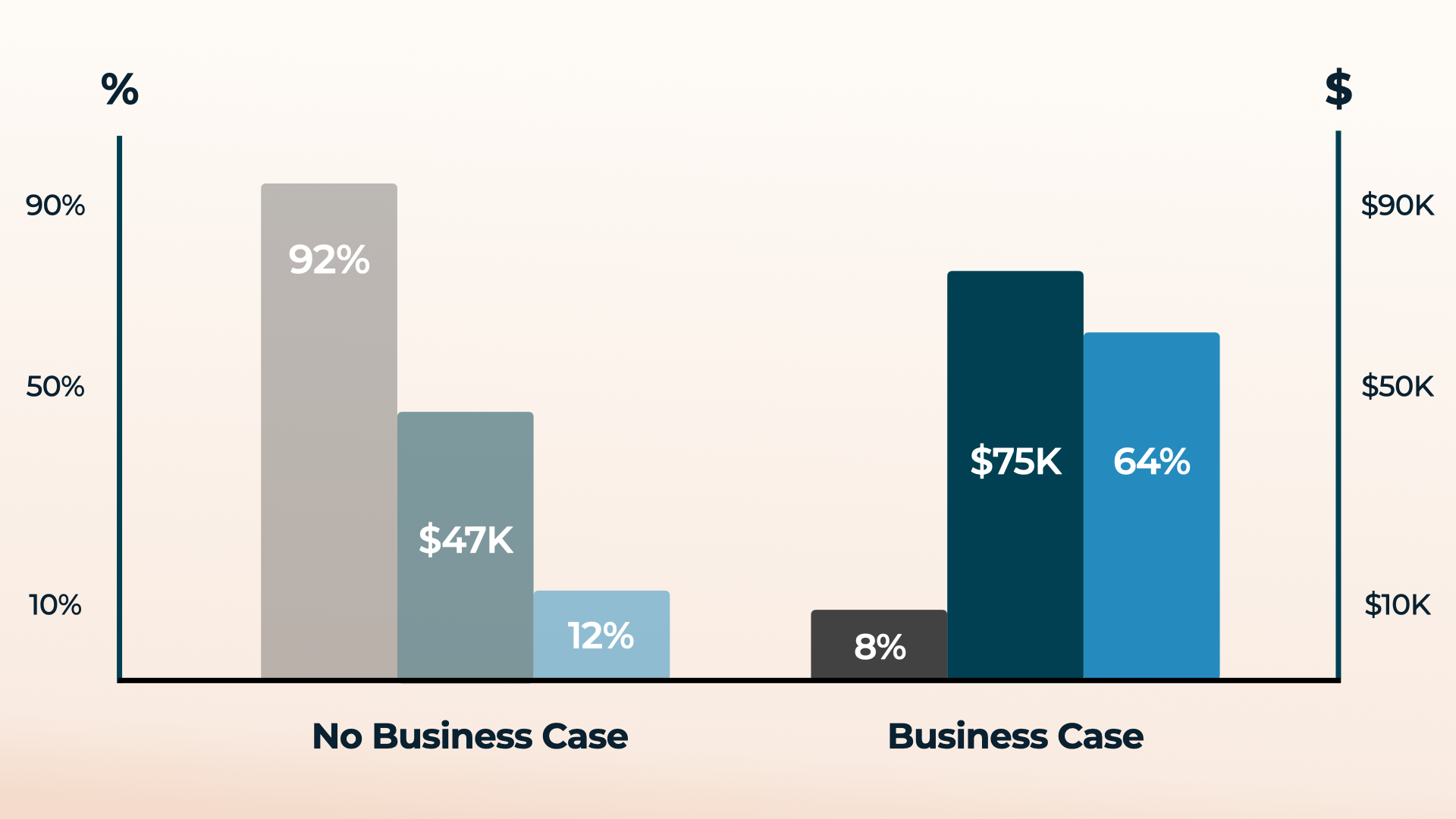
So, this guide is your trail guide to become a “2.0” Team.
Instead of selling to buyers, you’ll sell with them:
Building champions, by building business cases. While scripting the internal buying conversations happening about you, without you — where decisions are actually made.
It’s a shift that starts on the left, and ends on the right of this visual:
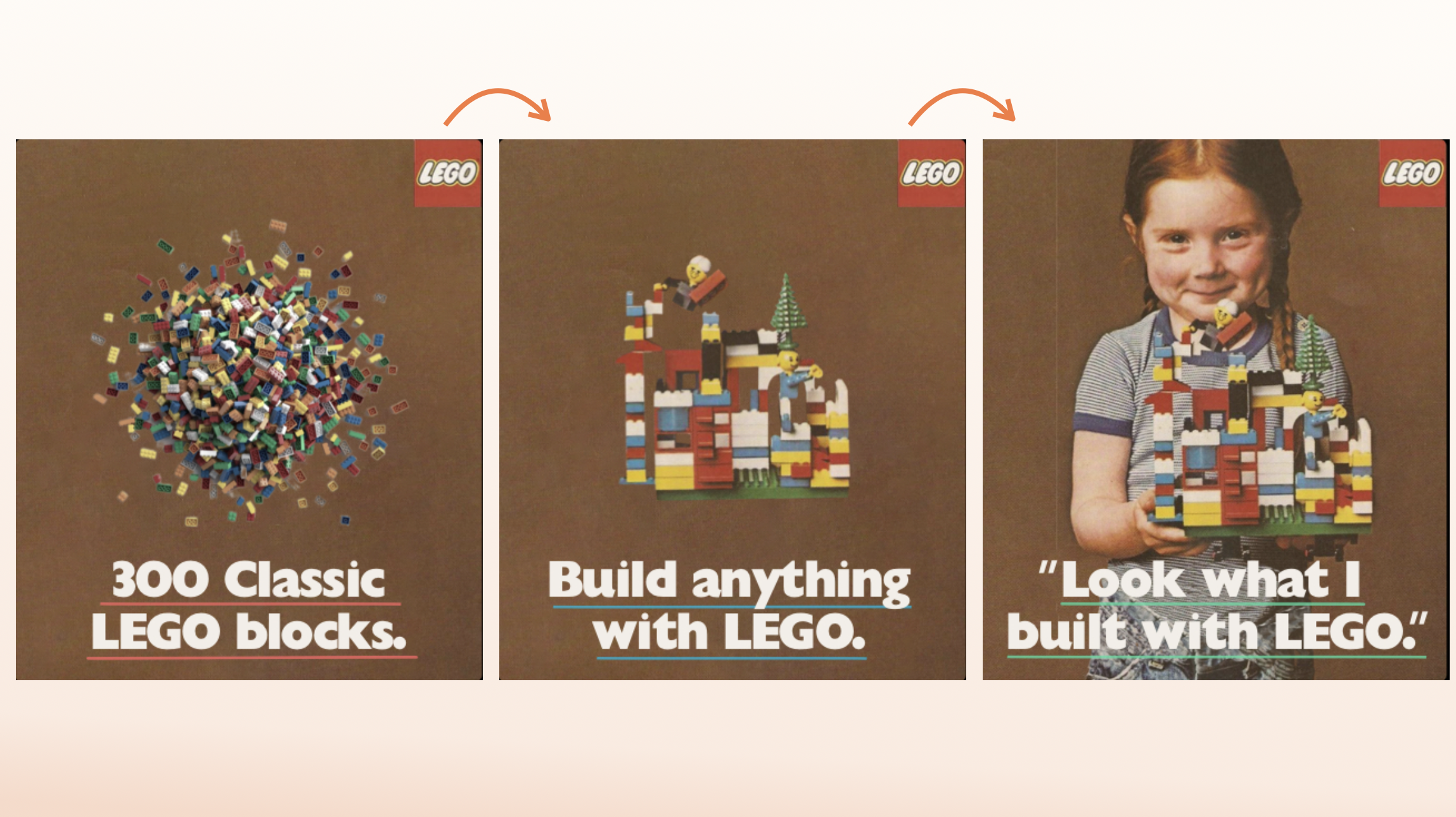
Assuming you’re on board here, let’s roll.
I make zero promises this shift is easy.
I’m just promising it’ll be worth it. And with this guide, successful.
Selling with is a different GTM approach for most sales leaders, which requires investing time upfront to learn and change. But just like comedy legend Jerry Seinfeld said:
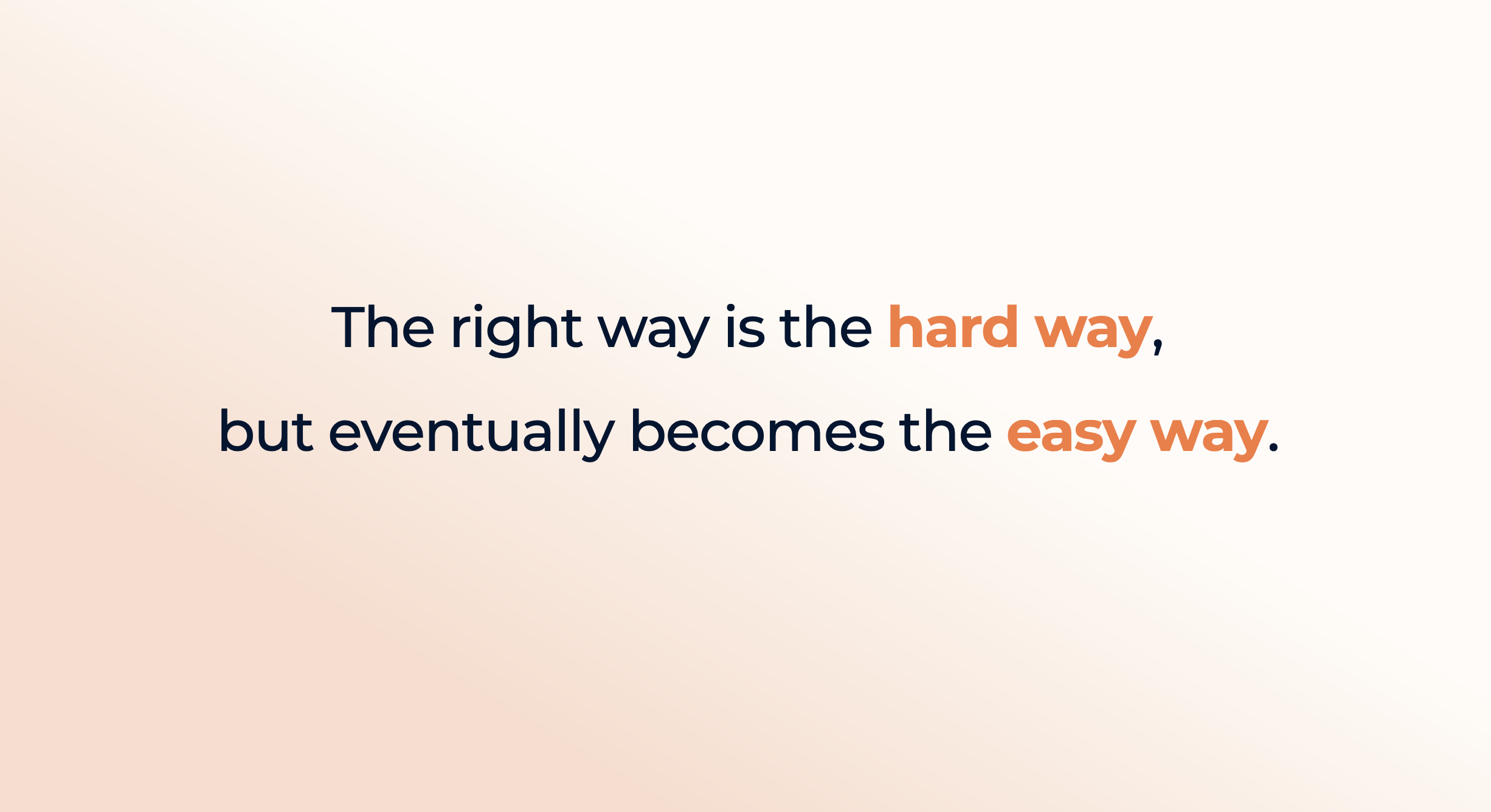
Ready to get started?
Let me setup this shift with a short story.
Two years ago, we bought ClickUp for our engineers. It’s a killer product. Well designed, powerful. But we never used it.
Not until our CTO shifted the engineering team to an “Agile” process.
Where our developers build “epics” with user stories, owners, and deadlines. A process that’s built with frameworks, rituals, etc.
Guess what happened after?
Our ClickUp usage jumped, and our product velocity did too.
Because we focused on sticking to the process behind the product.
If we hadn’t rolled out Agile, the software would have been useless. But now, it’s how we capture and execute against our process.
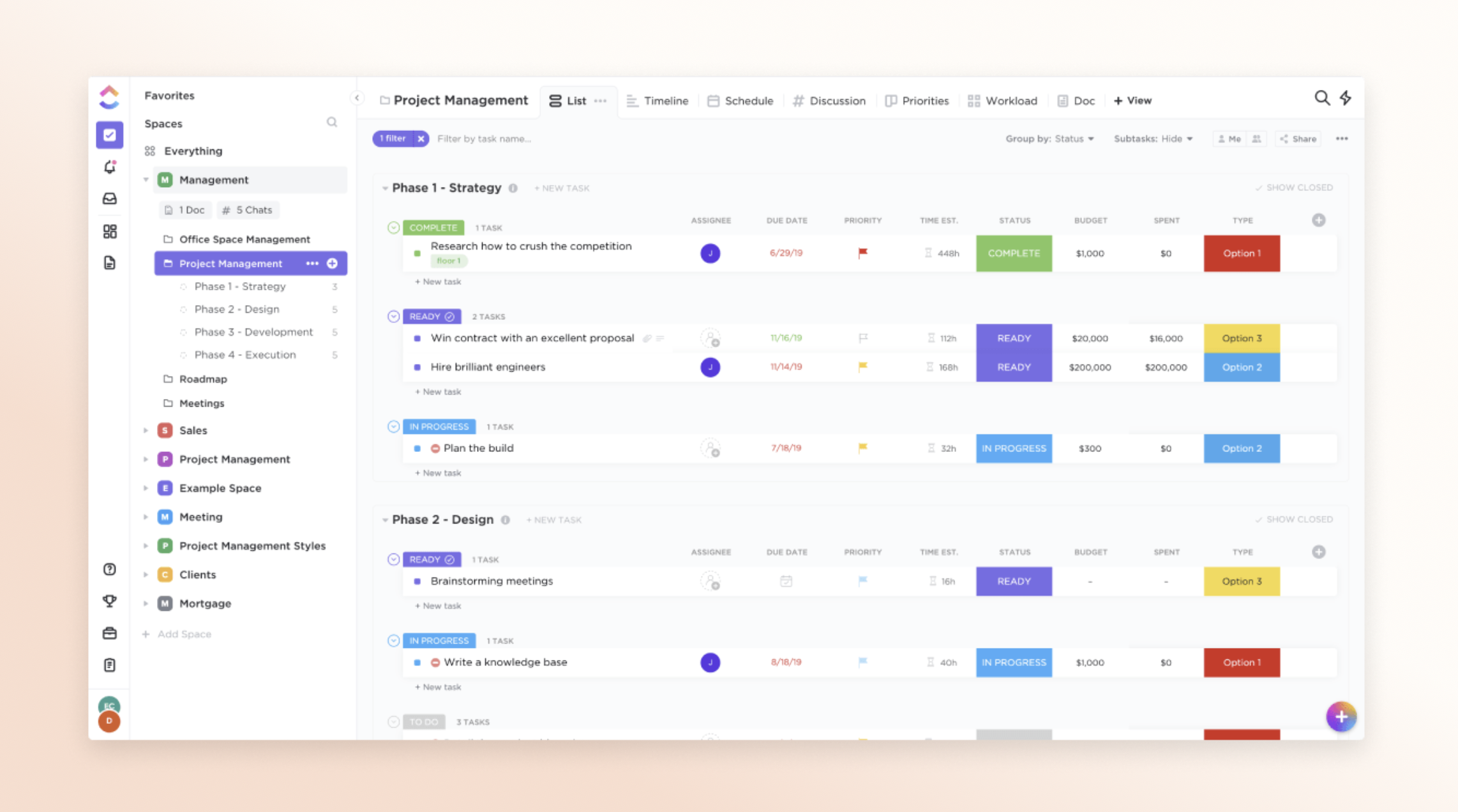
And yes… I know.
You’re a Sales or CS leader. Not an engineering leader.
But chances are, the product you’re selling and supporting was built with Agile too. So what we’re about to do together is the same thing:
We’re shifting your GTM toward a value-based sales process, using Fluint to execute. A process with 4 main parts:
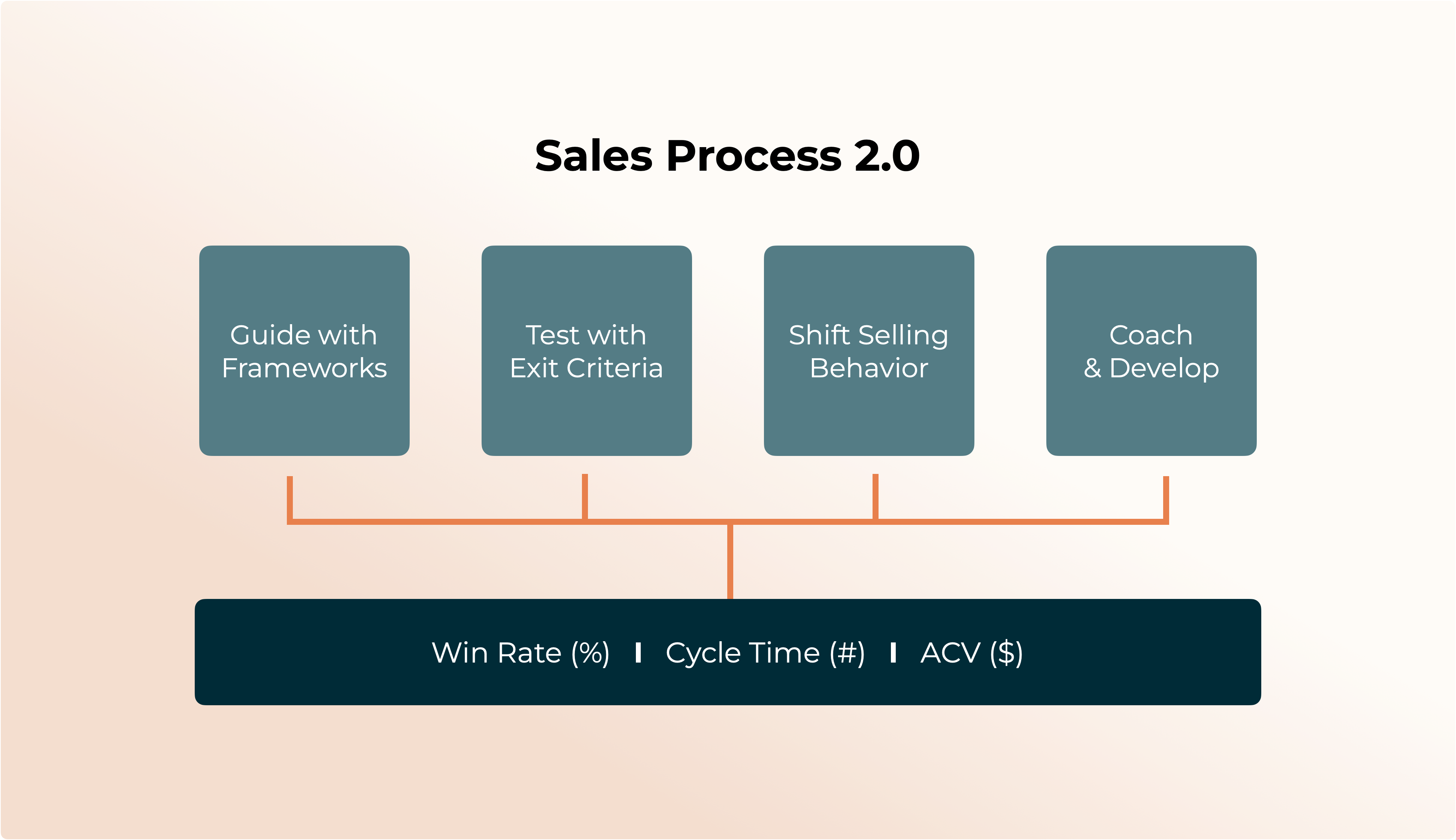
We’ll make this shift together, using a step-by-step process that’ll make the change in your GTM stick:
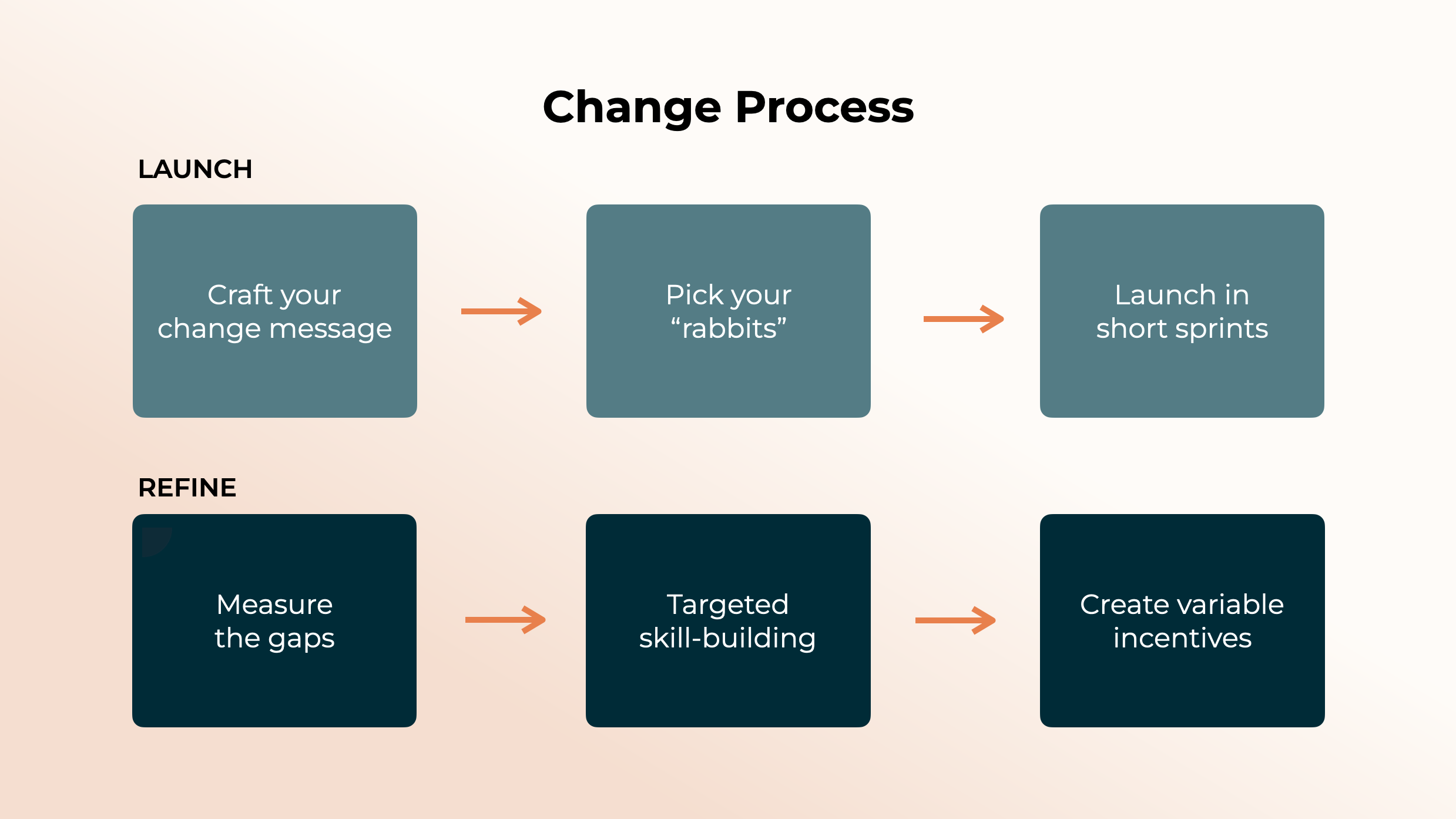
We’ll walk through the following steps. First, to launch:
- Craft your change message.
This will take the longest, because it’s where you start to realize where your revenue leadership team is or isn’t aligned. It’s the foundation, and if cracks show here, we’ve got to spend the time to align on them.
We’ll build your message with 3 factors in the change equation: today’s status quo, tomorrow’s vision, and concrete first steps.
- Pick your “rabbits.”
Start with 5 - 6 sellers who will run ahead of the rest, to stack up small wins. Wins that shape thinking, and build momentum.
- Launch the “new way” in short sprints.
Rollout short change sprints to execute against new behaviors, and rollout the core elements of 2.0. Stuff like updated exit criteria, sales stages, content frameworks, scorecards, and coaching rhythms.
Then, you’ll repeat these steps to refine the process over time:
- Measure the gaps.
Work with RevOps to continue tracking outcomes, how consistent your inputs are, and where gaps still exist.
- Targeted skill-building.
As you learn, rollout targeted enablement exercises with real deals (not classroom work) for the team, led by peers who are the ones selling.
- Create variable incentives.
Introduce variable rewards that sustain behavior changes and create continued change momentum.
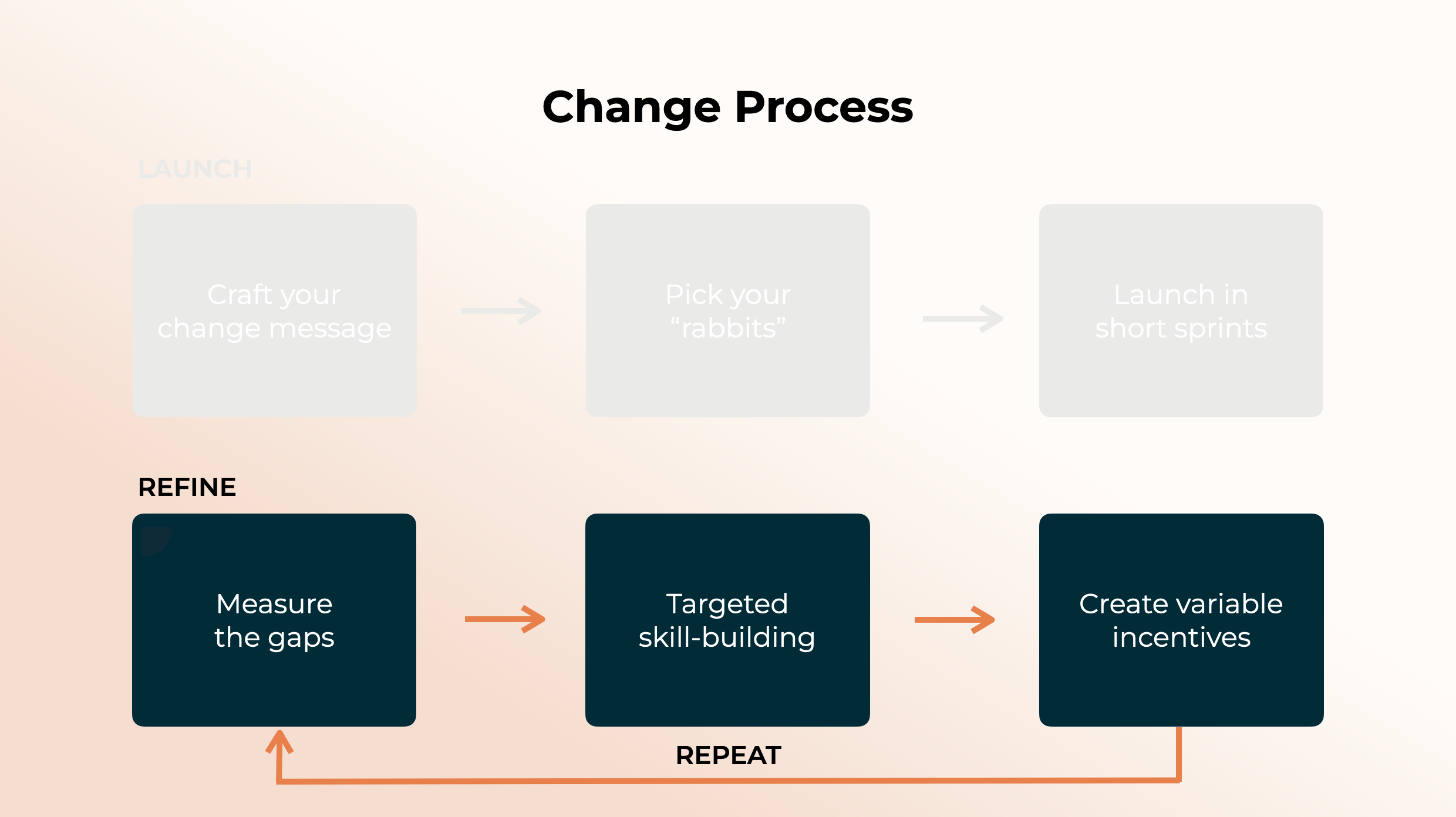
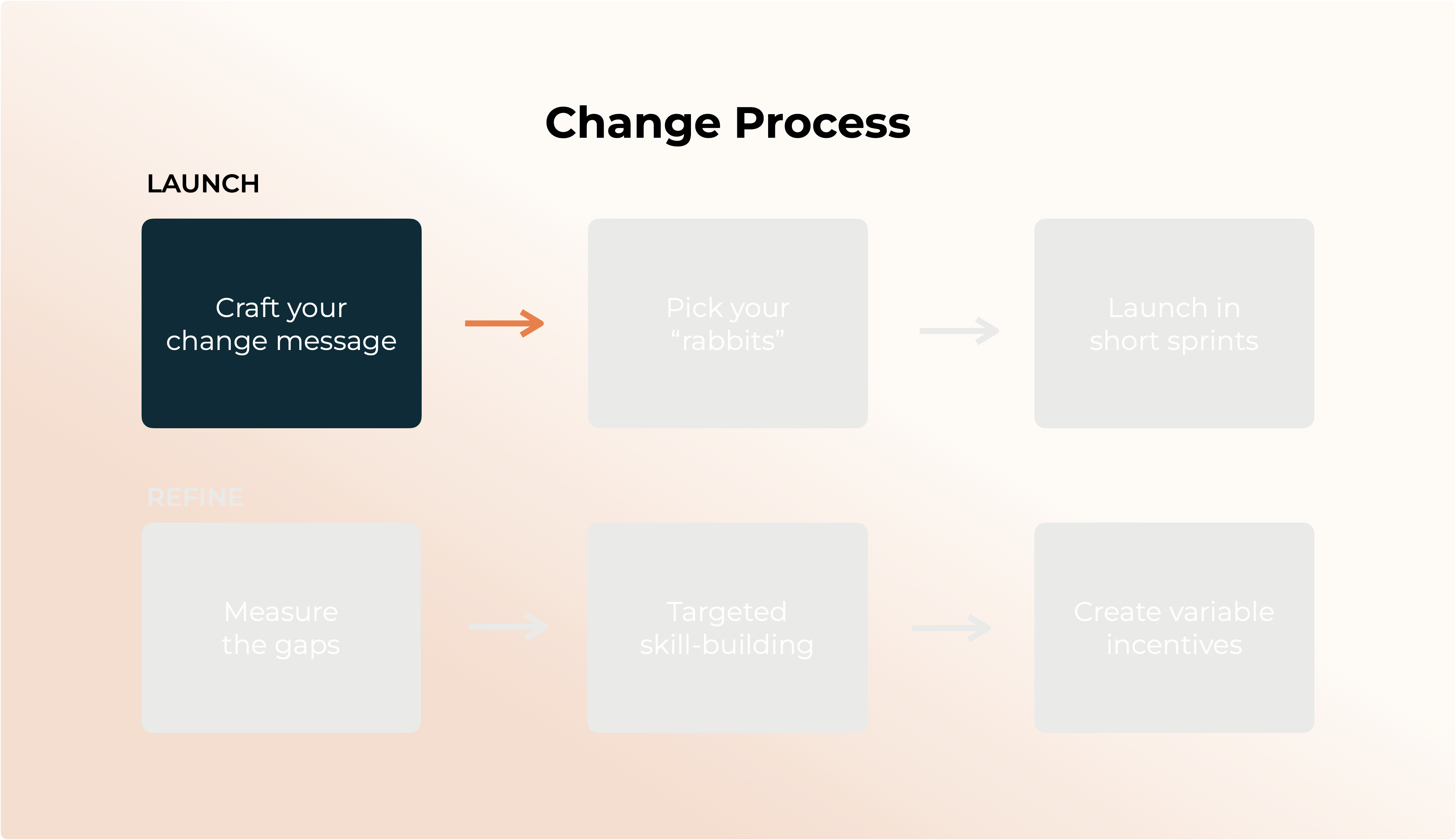
Most change efforts — running trainings, holding SKO’s, adding MEDDICC fields to Salesforce, etc… — are like throwing a few ice cubes into a jacuzzi.
It all just fades away, and make zero difference.
Why’s that?
Well, whenever you create a new way of operating, by default, you’re creating resistance. You’re pushing against your team’s existing behaviors, beliefs, and emotions.
People don’t like that, so they push back:
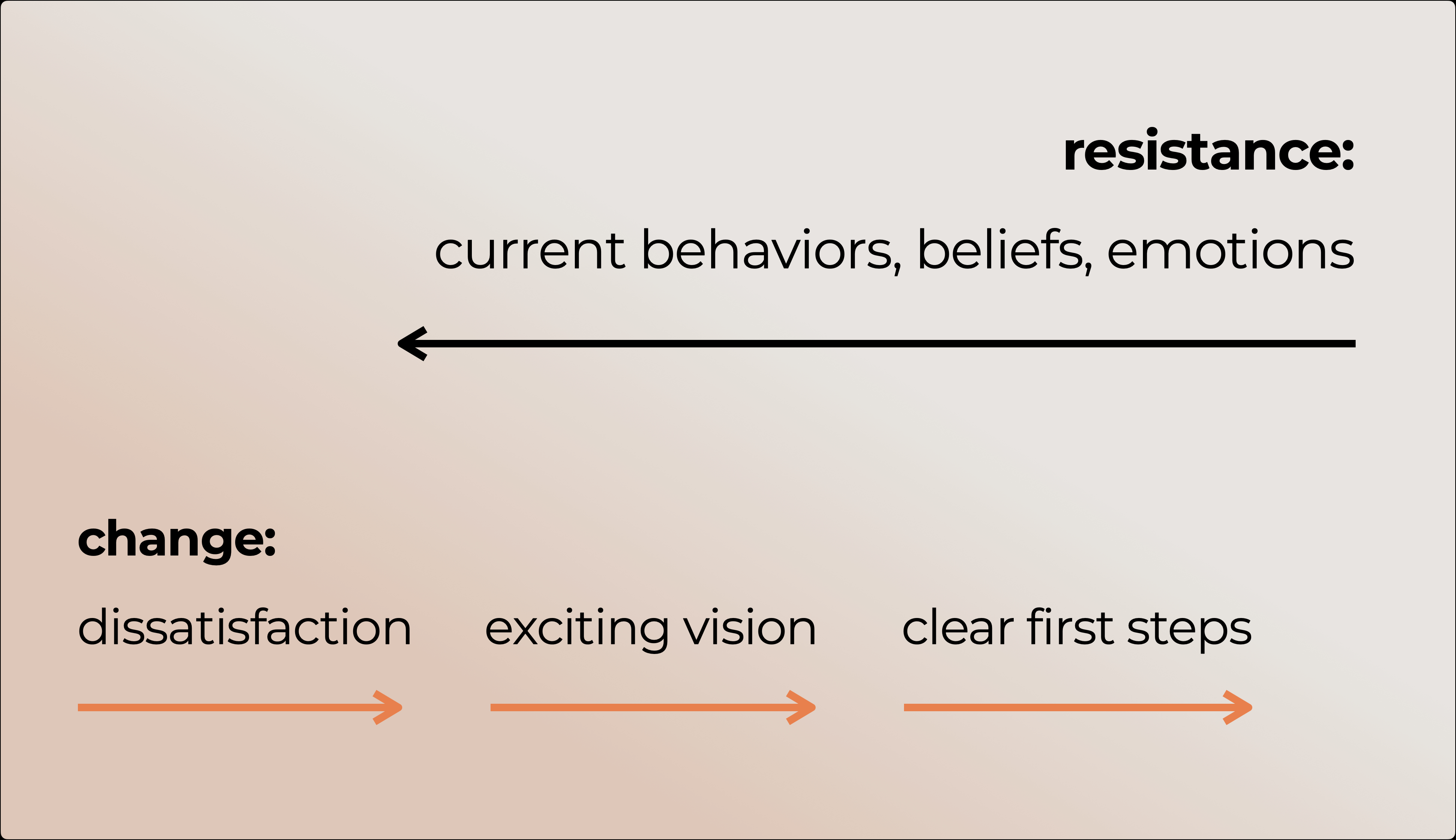
So, what’s strong enough to overcome that resistance and make change stick?
Three things. Together, they create The Change Equation:
[ D x V x FS > Resistance ] = Change
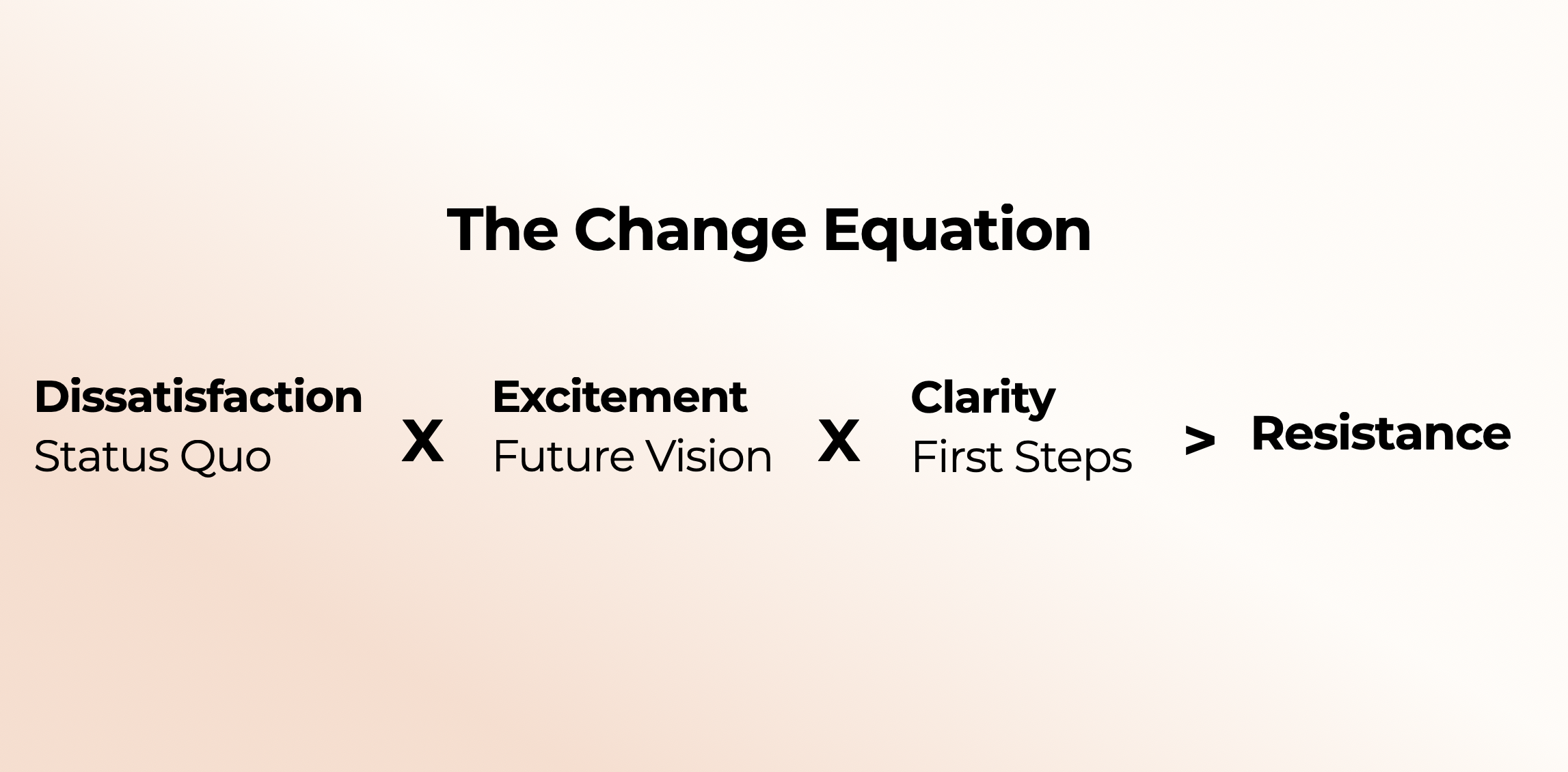
If your team doesn’t believe your revenue leadership’s all in on your new direction, they won’t be either.
So the exercise of crafting this message is to figure out where there’s a gap in buy-in, belief, and priority.
Everything rises and falls with spending the time to align here.
The 3 steps in the equation are:
- (D) Build an unbearable dissatisfaction with the status quo.
- (V) Paint a clear, compelling vision of the future together.
- (FS) Outline specific, concrete steps to move toward the vision.
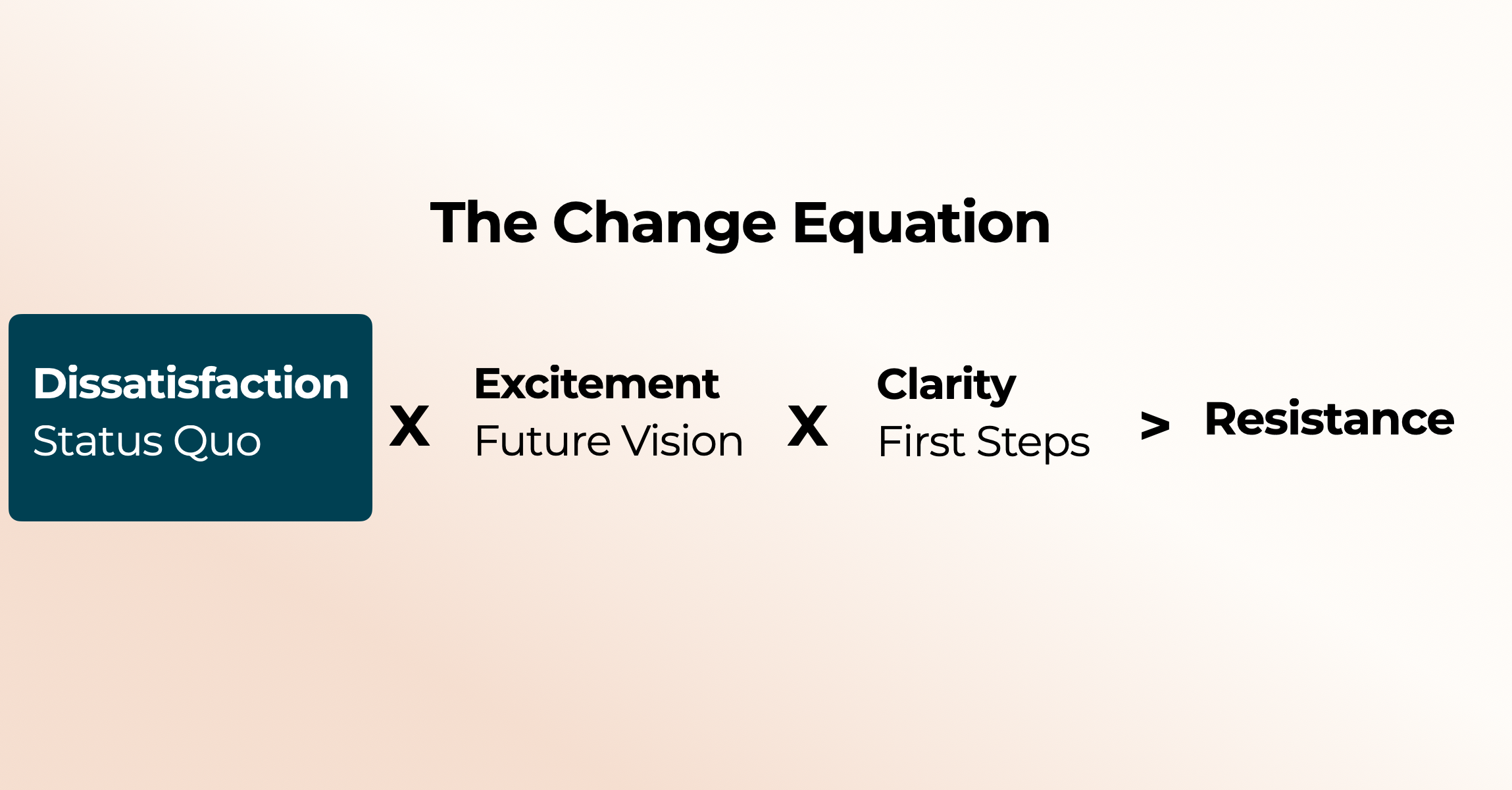
This only happens when we’re specific.
For example, don’t say “our win rate’s only 21%,” when what you really mean is, “Our pipeline evaporates between Stage 3 and 4.”
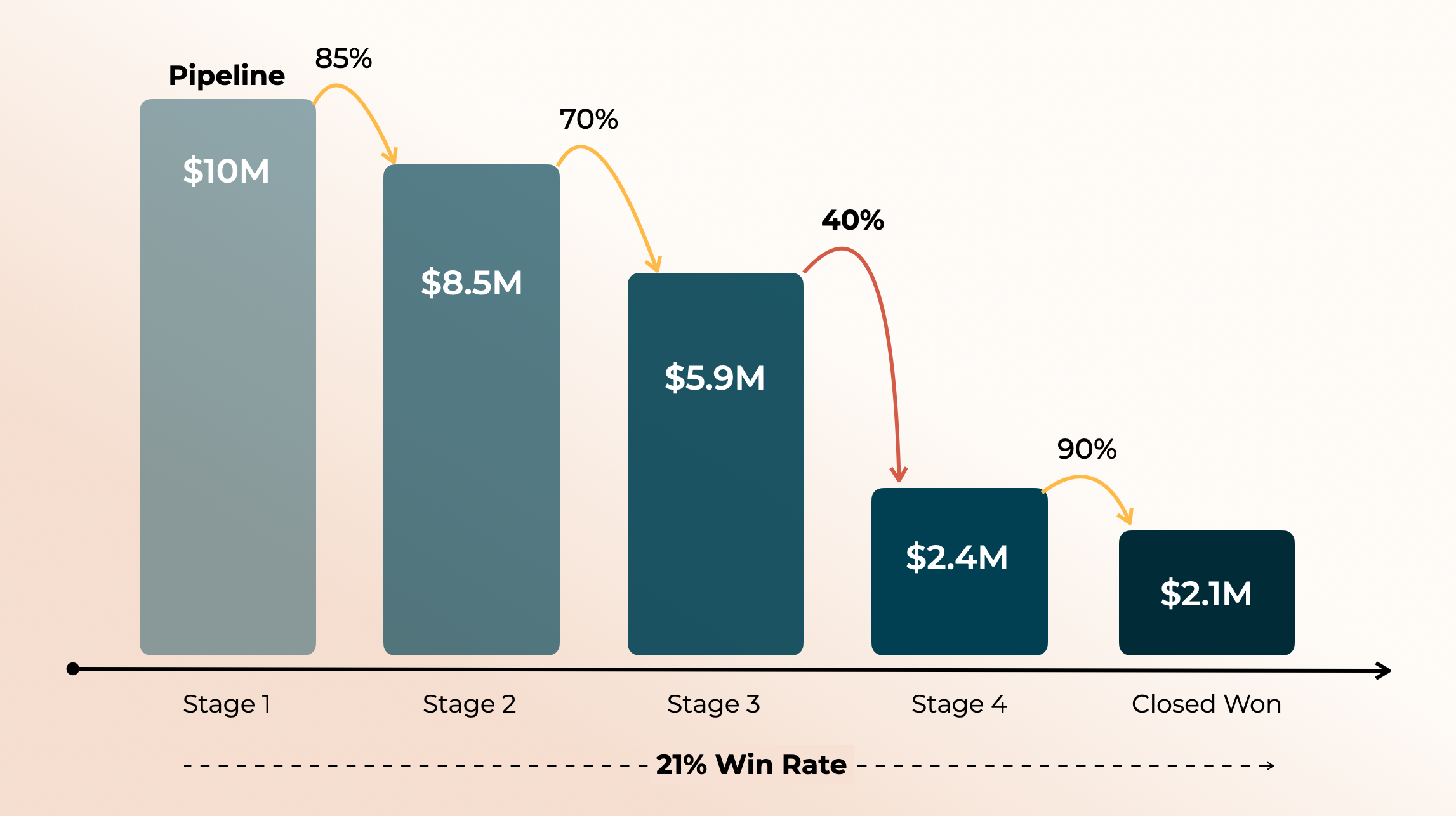
And what does that really mean?
We spend (X) time and ($) money building pipeline, only for it to stall. We can’t keep letting it die.
You can fill in the specifics with a simple problem statement that reads like this:
We need to see at least 80% stage-to-stage conversion rates.
But in reality, only 40% of our S3 deals make it to S4.
That’s because HR teams gets excited early, but then deals stall when the CFO and COO aren’t aligned.
Which means we’re stuck at 21% win rates — with just 10% of reps above plan (and OTE).
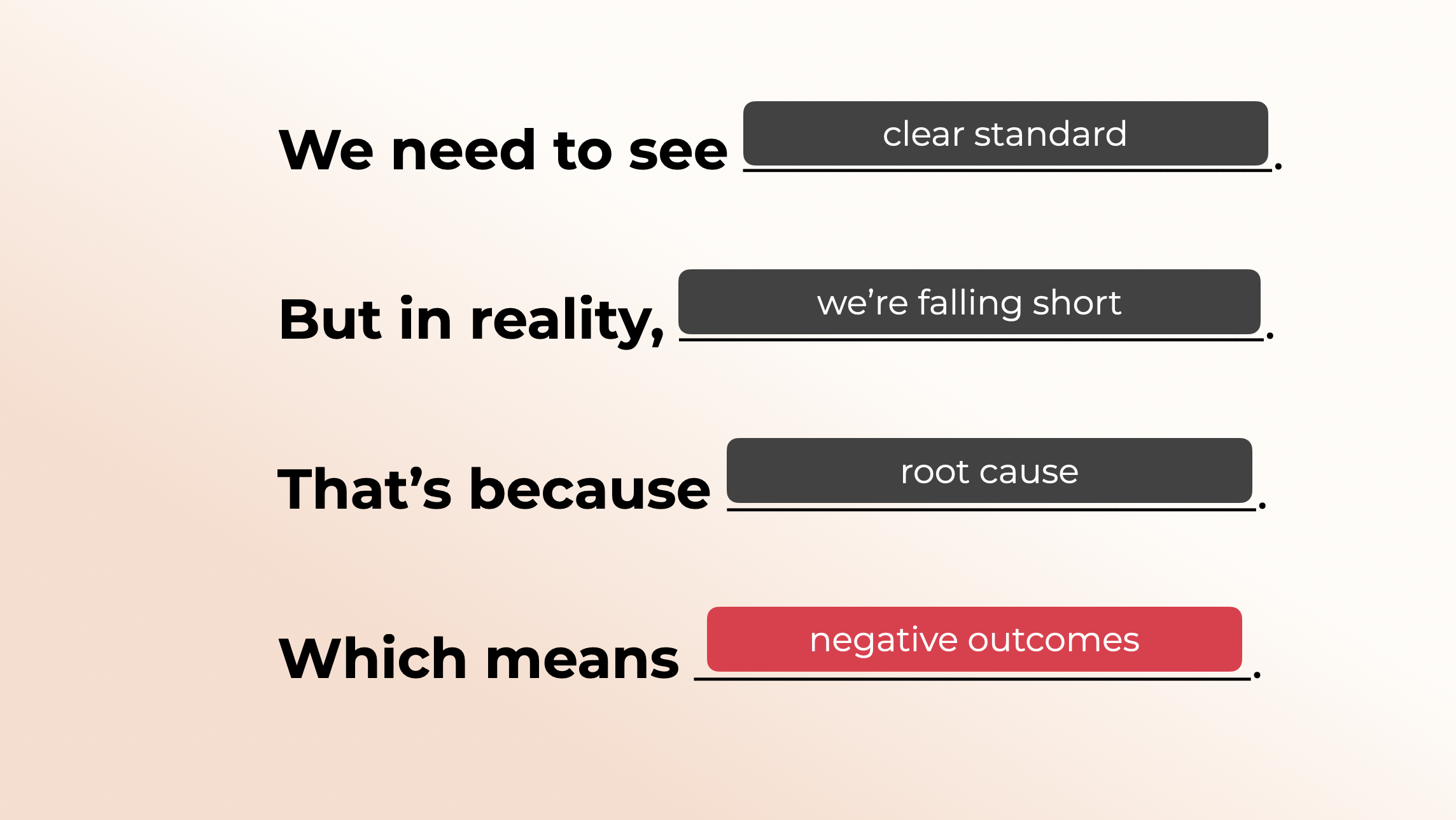
For example, check this out from a (redacted) customer’s deck:
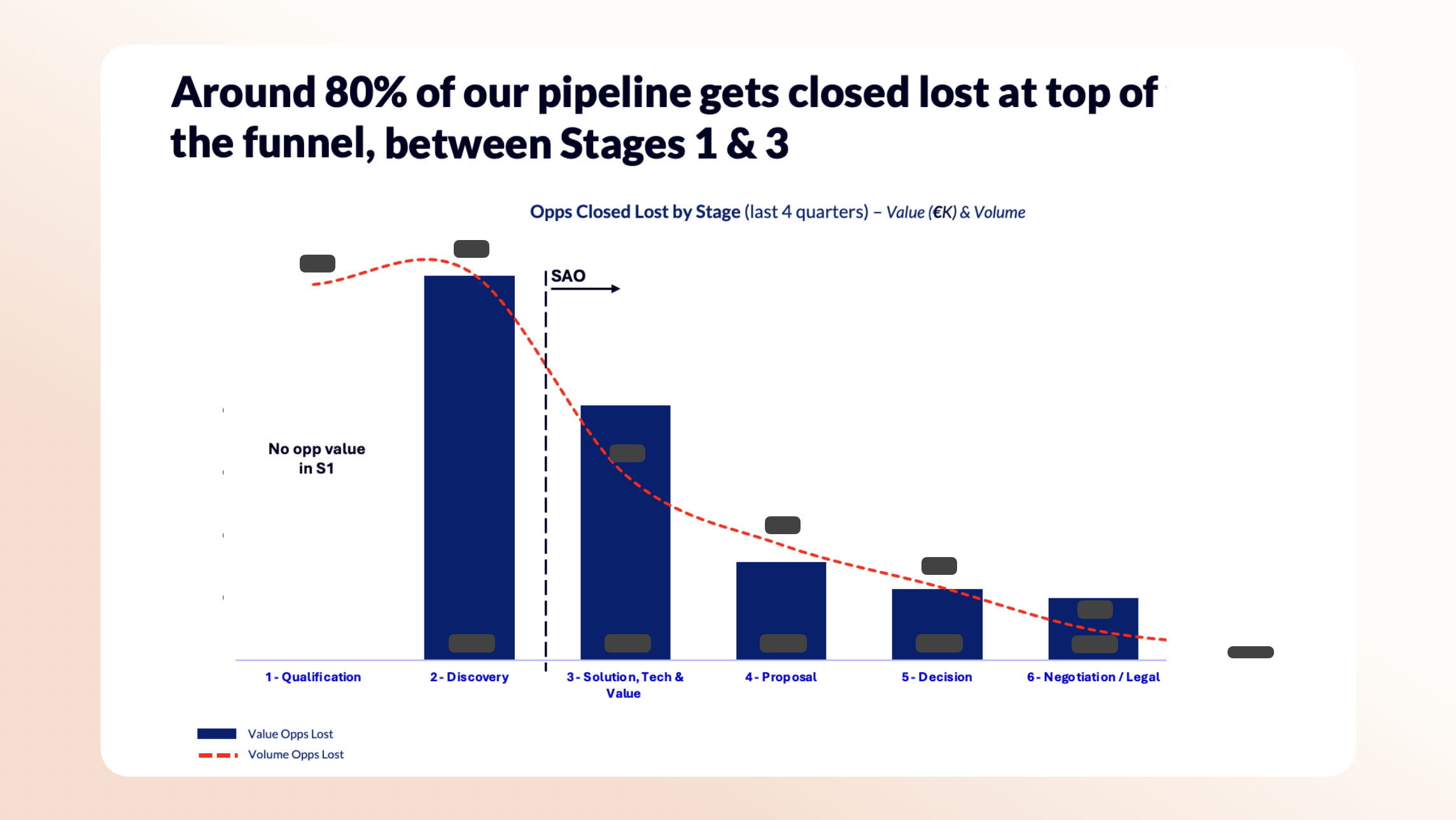
That’s pretty specific isn’t it? The action item for you here:
Bring your leadership together and name the problem-to-be-solved. Make sure it’s black and white.
Don’t leave this vague, or stuck in the gray:

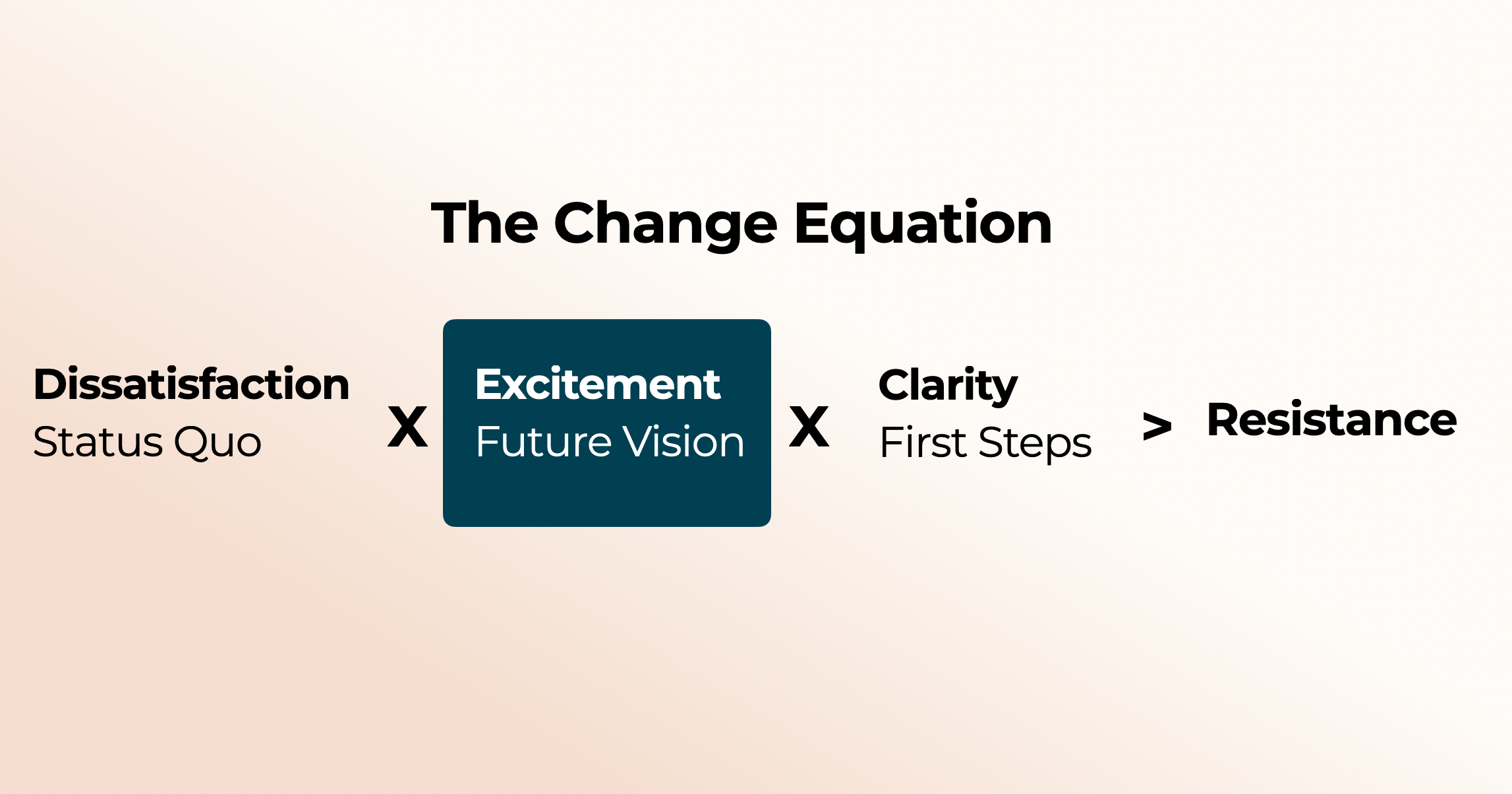
Value = tomorrow’s payoff (-) today’s problem.
It’s space in between where you are, and where you could be.
So, you’ve now got a problem statement outlined. But what’s everyone excited to move toward? We need to make that clear by:
- Flipping the problem upside.
- Showing how the company wins.
- Tying that back to how a seller wins (aside from commission).
For example, if the “negative outcome” above is:
- Just 10% of reps are above plan (and their OTE).
Then, what would it mean for:
- Just 10% of reps to miss plan (and their OTE).
It’s typically pretty obvious what this means at a company level. But skipping the third step here, because we assume sellers are simply “coin operated,” is a miss.
It’s a miss that creates an adoption gap. Just like my friend, Lawrence Wayne O’Connor, who’s now rolled out 2.0 multiple times, drew up:
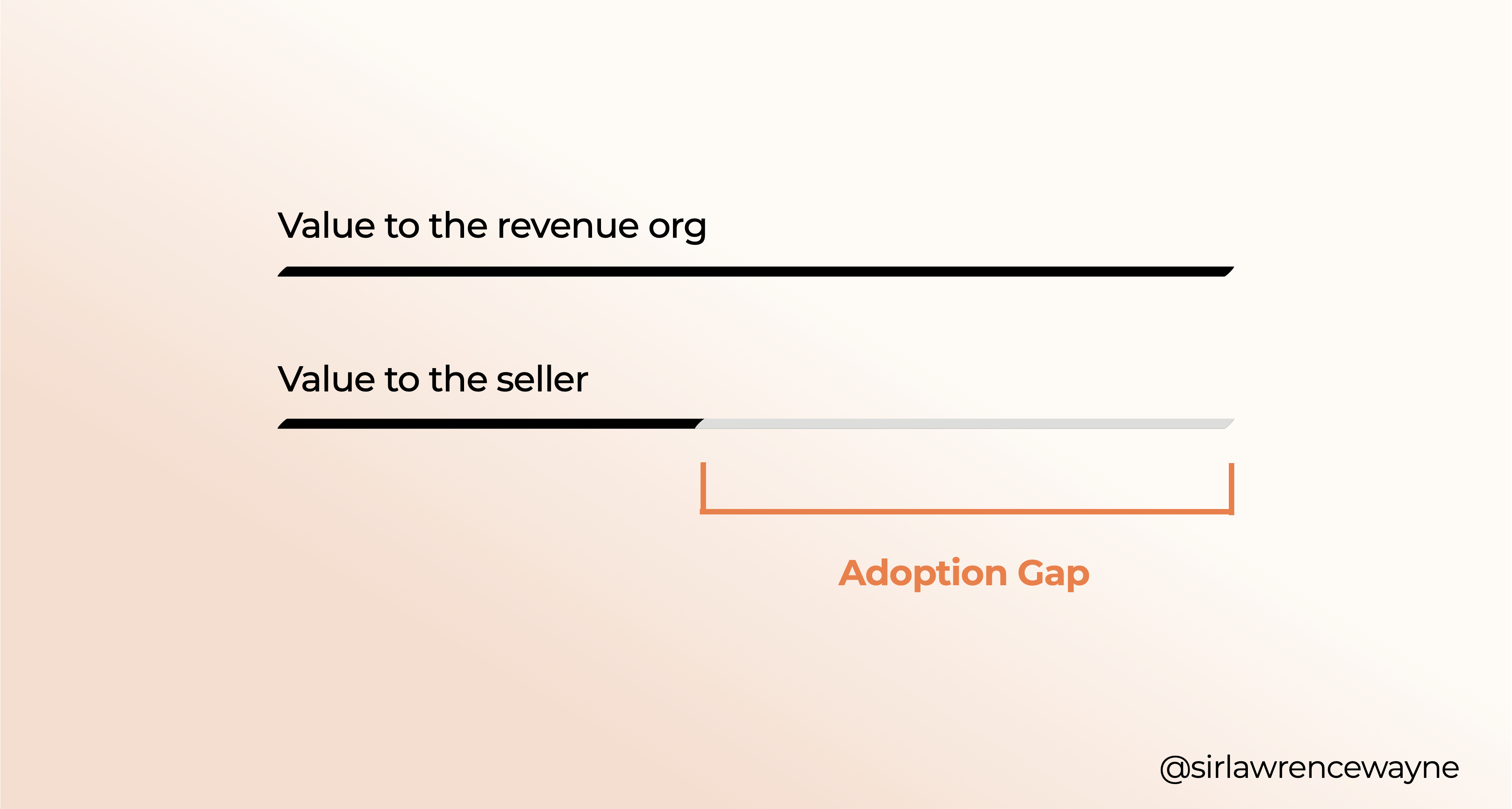
The best way to close that gap?
Show them a before and after, of someone who’s already made that shift (more on this below), and then just ask:
Why would they want to change?
Stories of sellers like Samantha, Rick, and Greg, about landing Fortune 500 deals, and becoming a head of sales:

We’re big fans of frameworks here (clearly).
So along with these stories, you can build contrast to the problem statement with a simple vision statement:
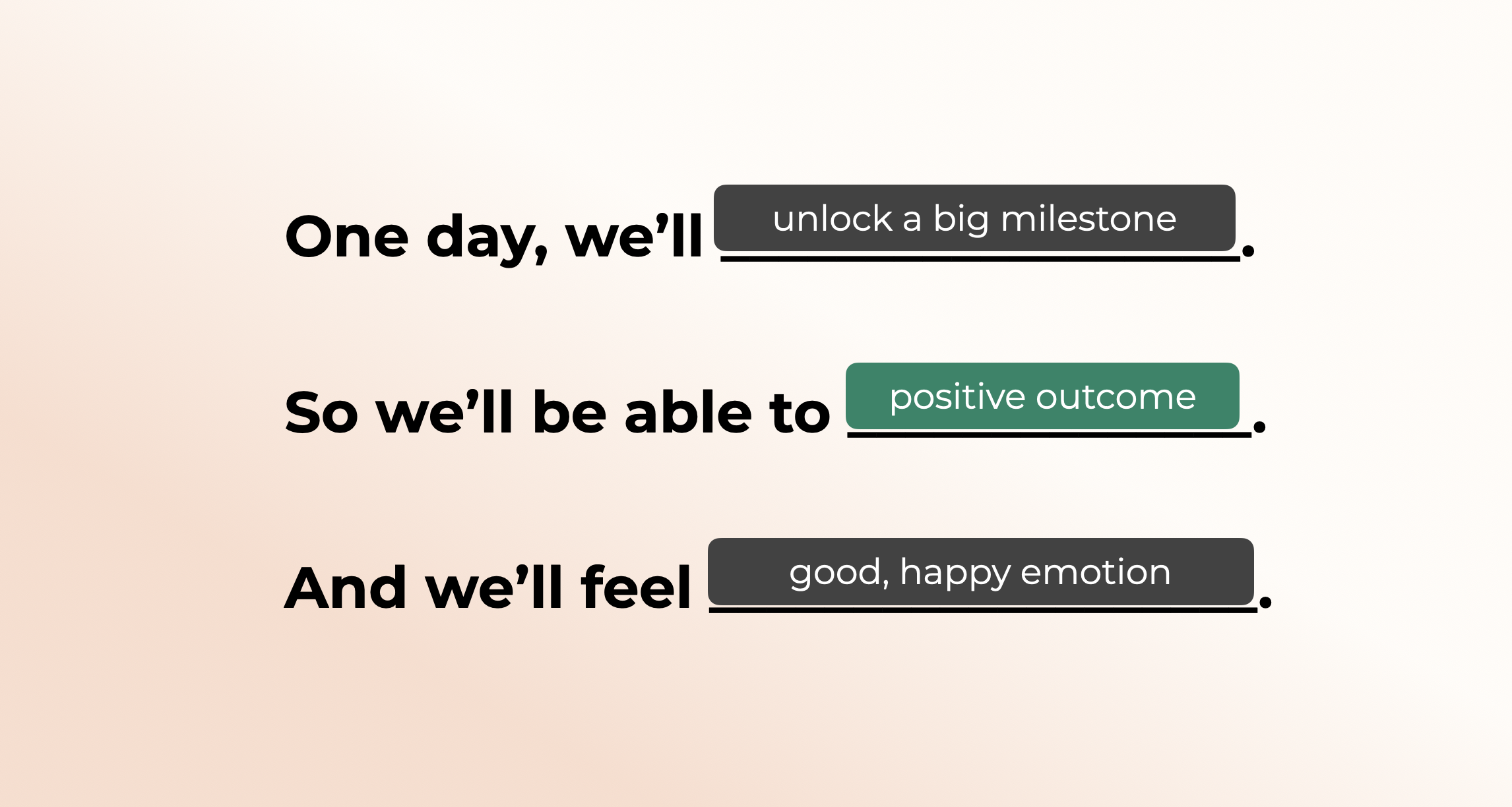
As you start to see even more examples of change, continue to share those stories:
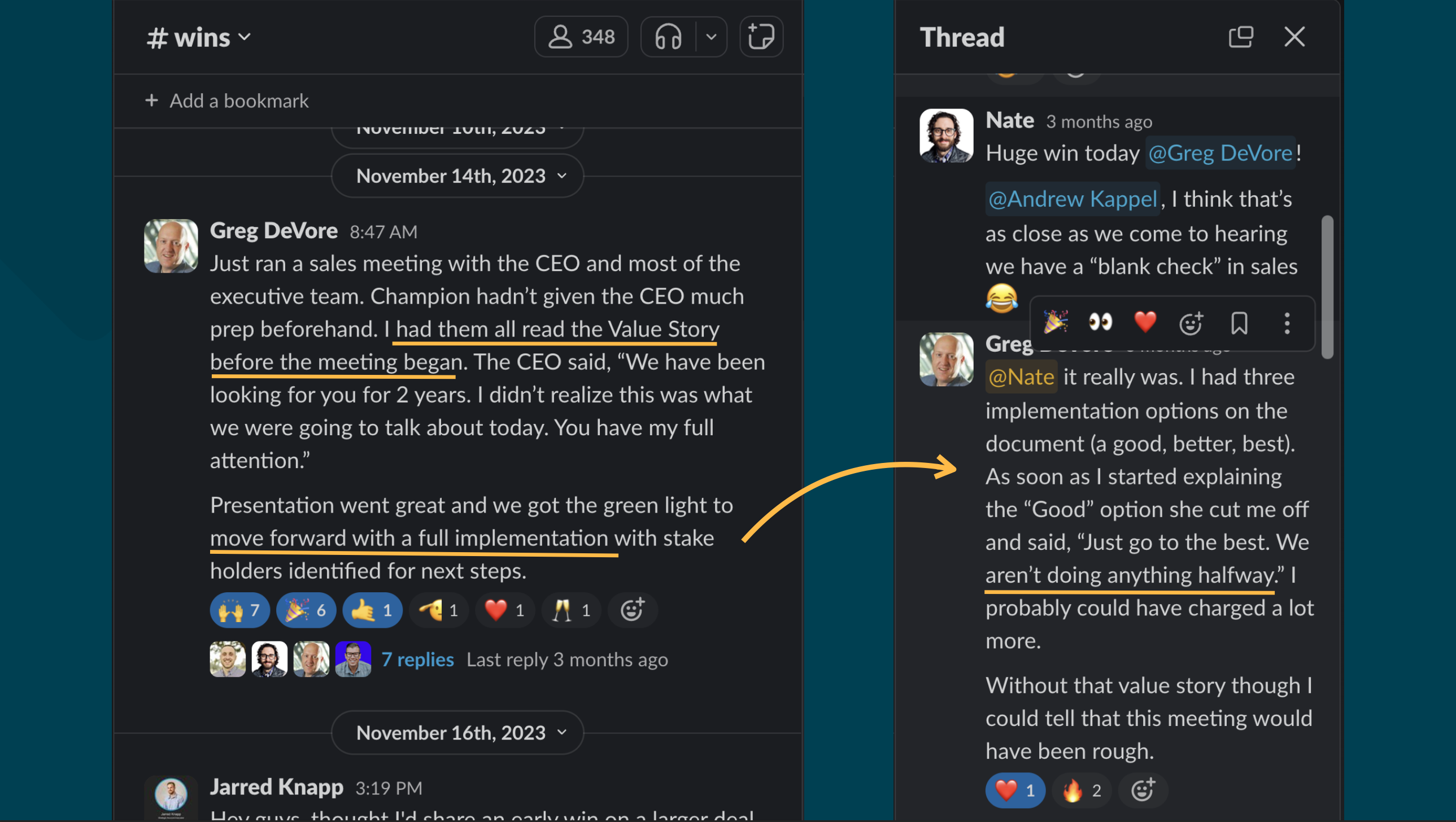
Do this often enough, and you’ll create a pattern and a strong draw for others to follow along:
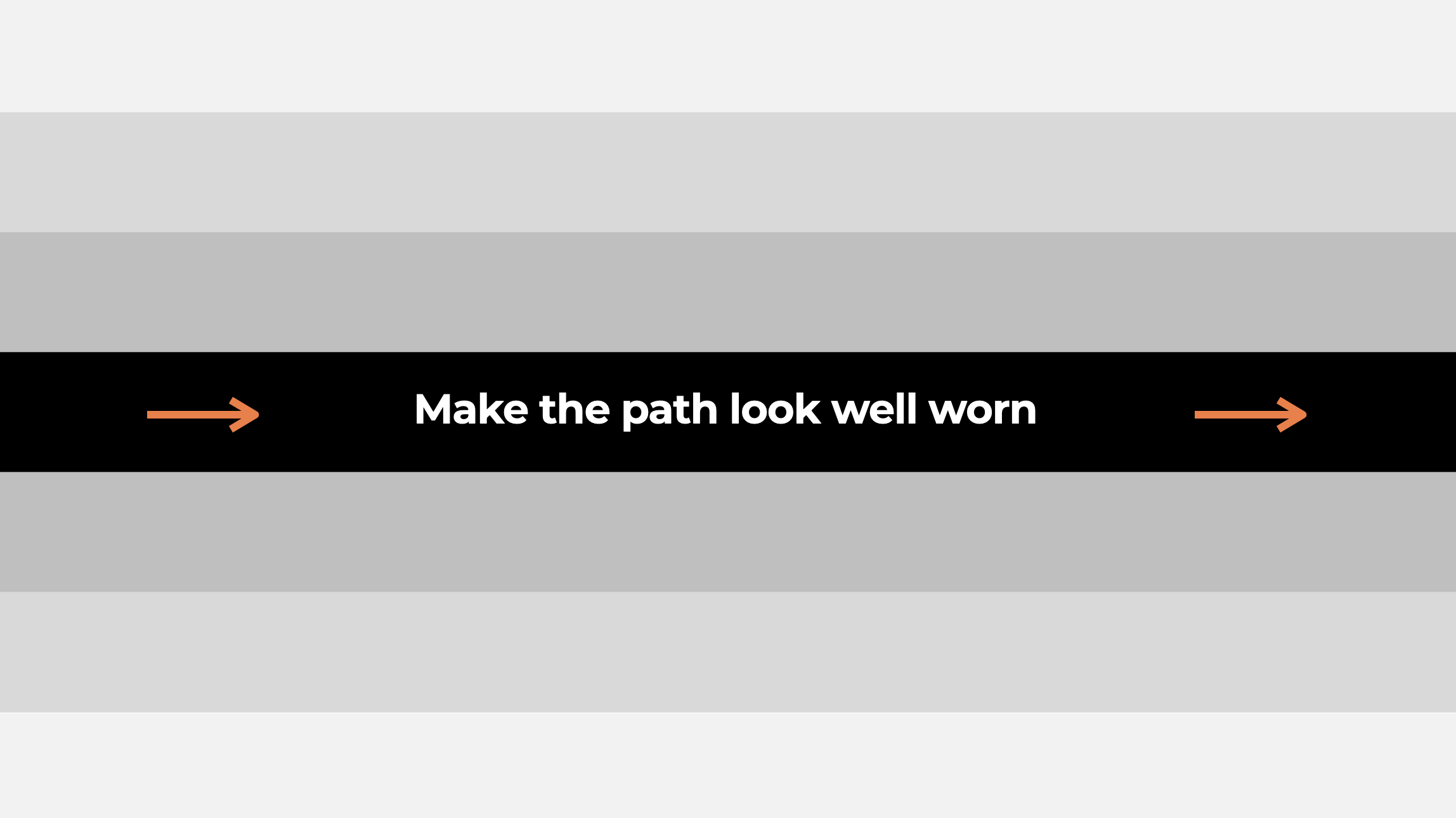
Change efforts fail when they’re made overly complex.
There’s often a lot we could do, but only few things we need to do — and throwing too much change at someone all at once is scary.
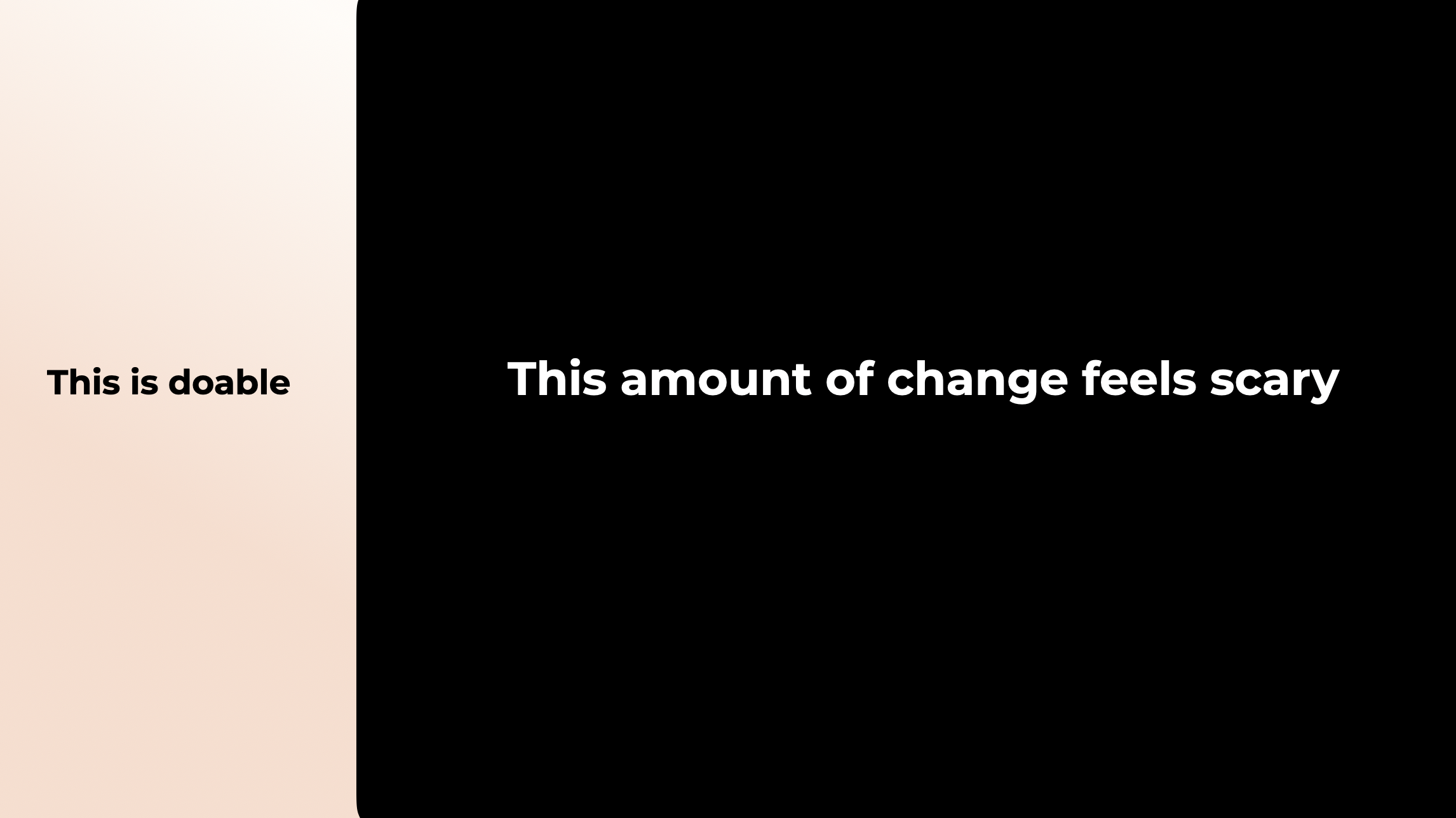
So overall, your goal is to simplify what you’re asking, by focusing on just one thing we need our teams to execute on.
Here’s a pretty incredible example from the Heath Brothers’ research:
A group of researchers in West Virginia wanted to reduce obesity and create a “healthy” community. So, they launched an education campaign all about the benefits of being healthier.
The problem is, that didn’t actually show people how to be healthy, and all the education about diet and exercise was too complex.
So what they’d do? They focused on:
- Diet is biggest driver to a healthy lifestyle.
- Saturated fat is the biggest driver to unhealthy diets.
- Full-fat dairy is the greatest source of saturated fats.
- Substituting in skim milk is a fast way to change.
So what’d they do?
They mailed people skim milk coupons, and obesity started to drop.
Instead of telling people to “be healthy” they mailed coupons.
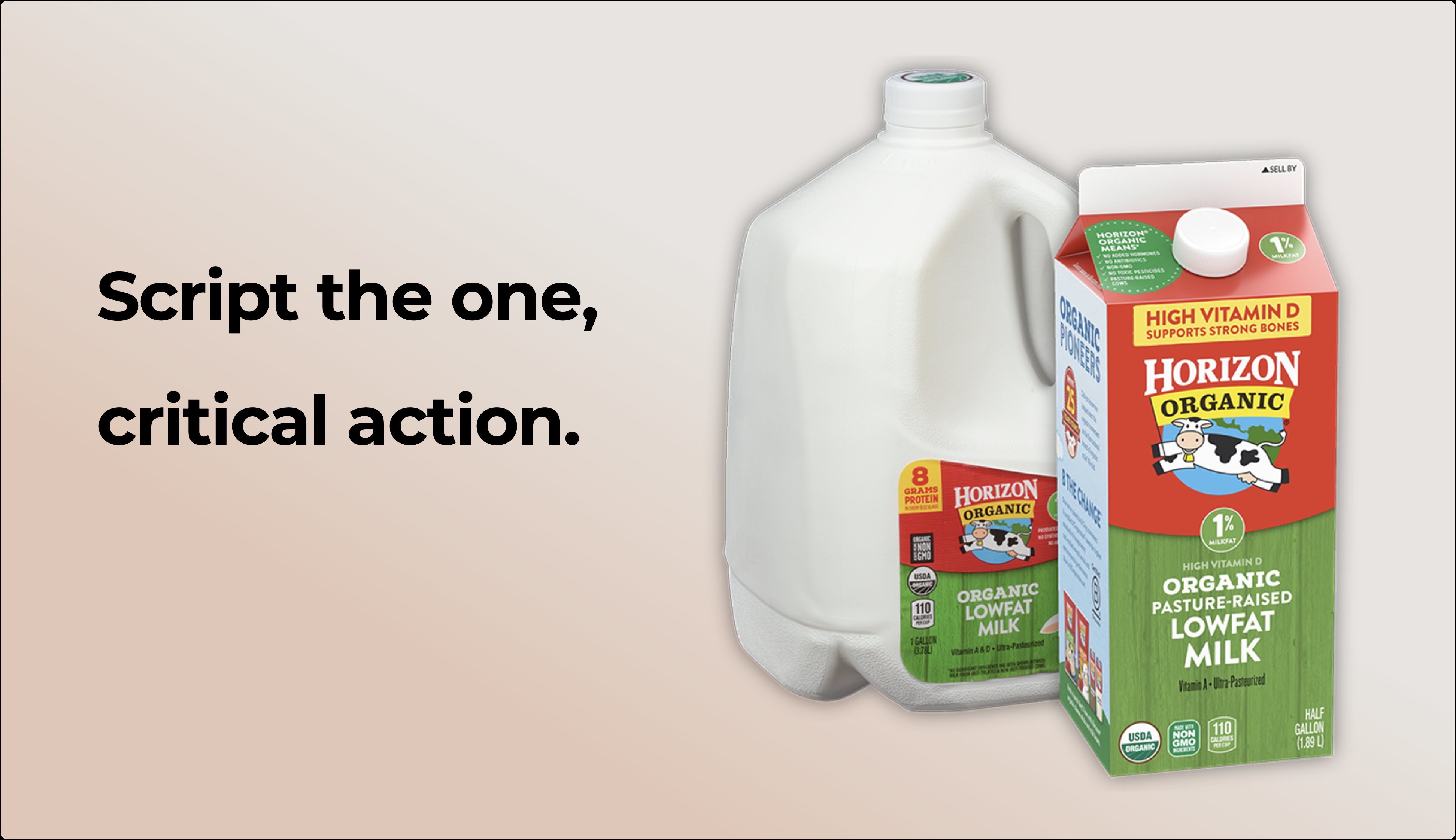
Here’s the skim milk coupon for you. It’s the most common first step to take:
Get 1 buyer to leave 1 comment on 1 business case.
That’s it.
If a seller can do that, they’ll have practiced how to:
- Build a point of view that’s worth engaging with.
- Identify discovery and deal gaps they need to fill.
- Positioned the business case with the buying team.
- Shifted their deal to a more collaborative approach.
- Created “signal” by finding a buyer who’s engaged.
Which leads to the “rule of 3” we’ve found inside Fluint’s data:
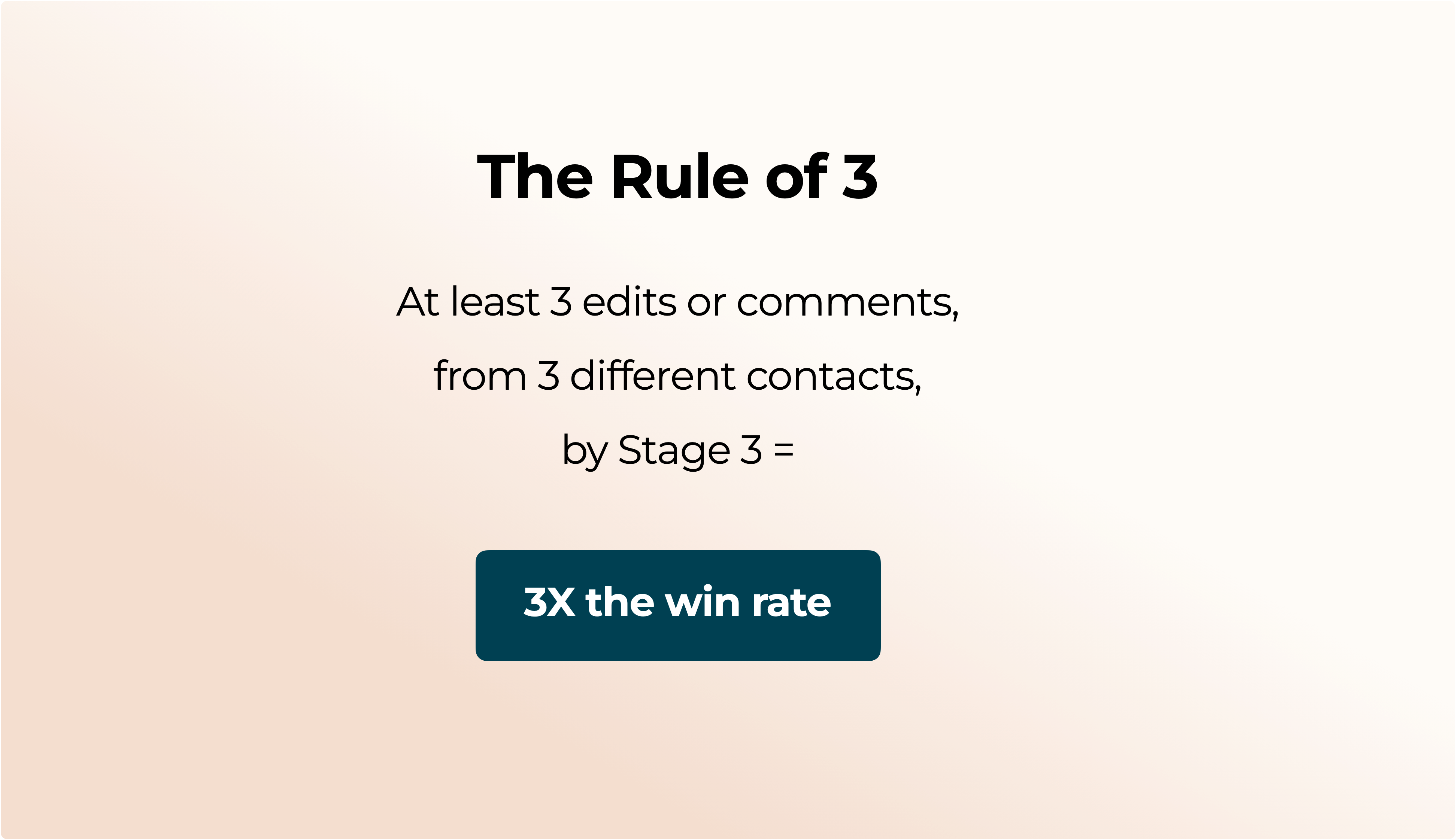
Now, I’ll admit it, we’re cheating here a bit.
The focus is narrow, just one comment or edit.
But we’re developing a whole set of sales skills along the way:
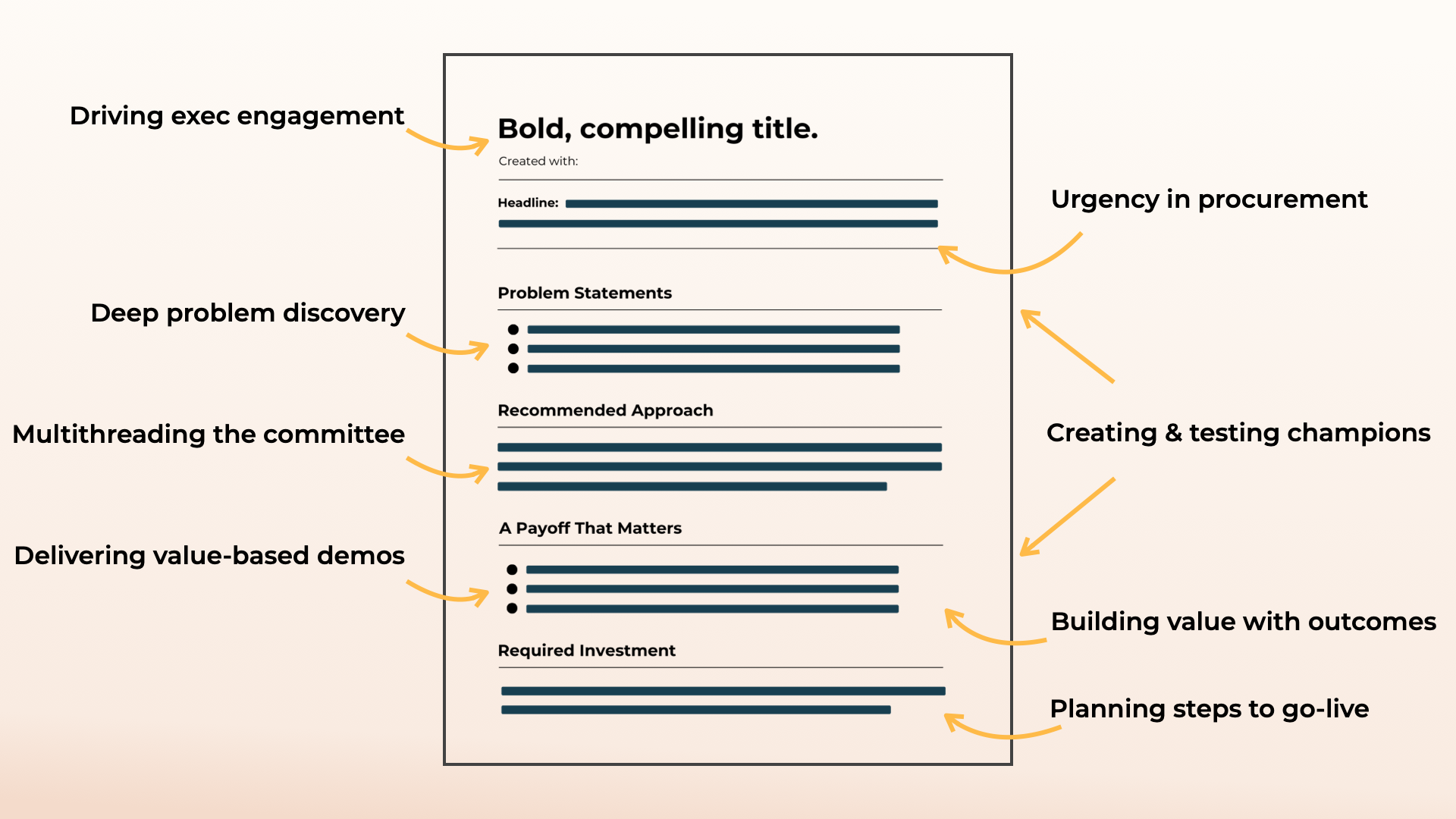
A seller who collaborates with vs. sells to has already made the shift.
PS, if you’re not yet selling with Fluint, let’s talk — we’ll guide you through making this shift, together:
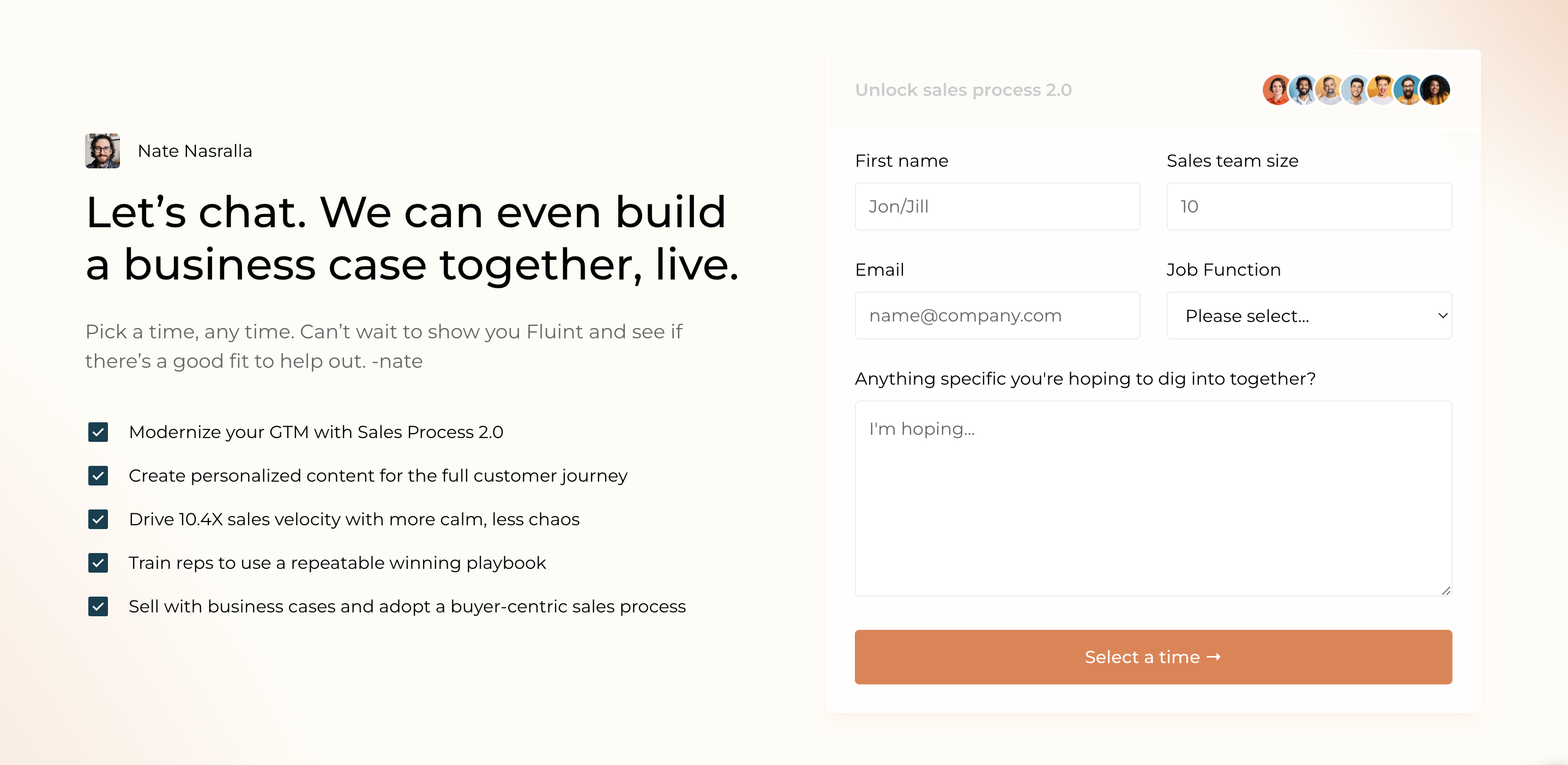
Small things become big things when they stack up over time. Like little LEGO blocks that build on each other.
So, the way to create big change is to act small first:
Quick wins, which create stories, which shape thinking, which build momentum.
Eventually, that momentum carries a wider change effort across your full team.
So, how do you start small?
Send your first team running far and fast.
These are your “rabbits.”
A handful of sellers (usually 5 - 6 sellers plus a manager) who run ahead of the rest, and execute on everything else that follows.
Ideally, they’re sellers who are:
- High influence when you set them up as an example.
- Quick learners, and not afraid to “break stuff.”
- Willing to serve as go-to people during a rollout.
And here’s the thing:
They don’t need to be the #1 reps today. **Because they will be soon.
For example: Andrew was one of the “rabbits” in the Mid Market segment, selling to security teams. A pretty tough segment to work.
He started consistently selling with champions, and outsold the typical Enterprise rep, while winning AE of the Year:
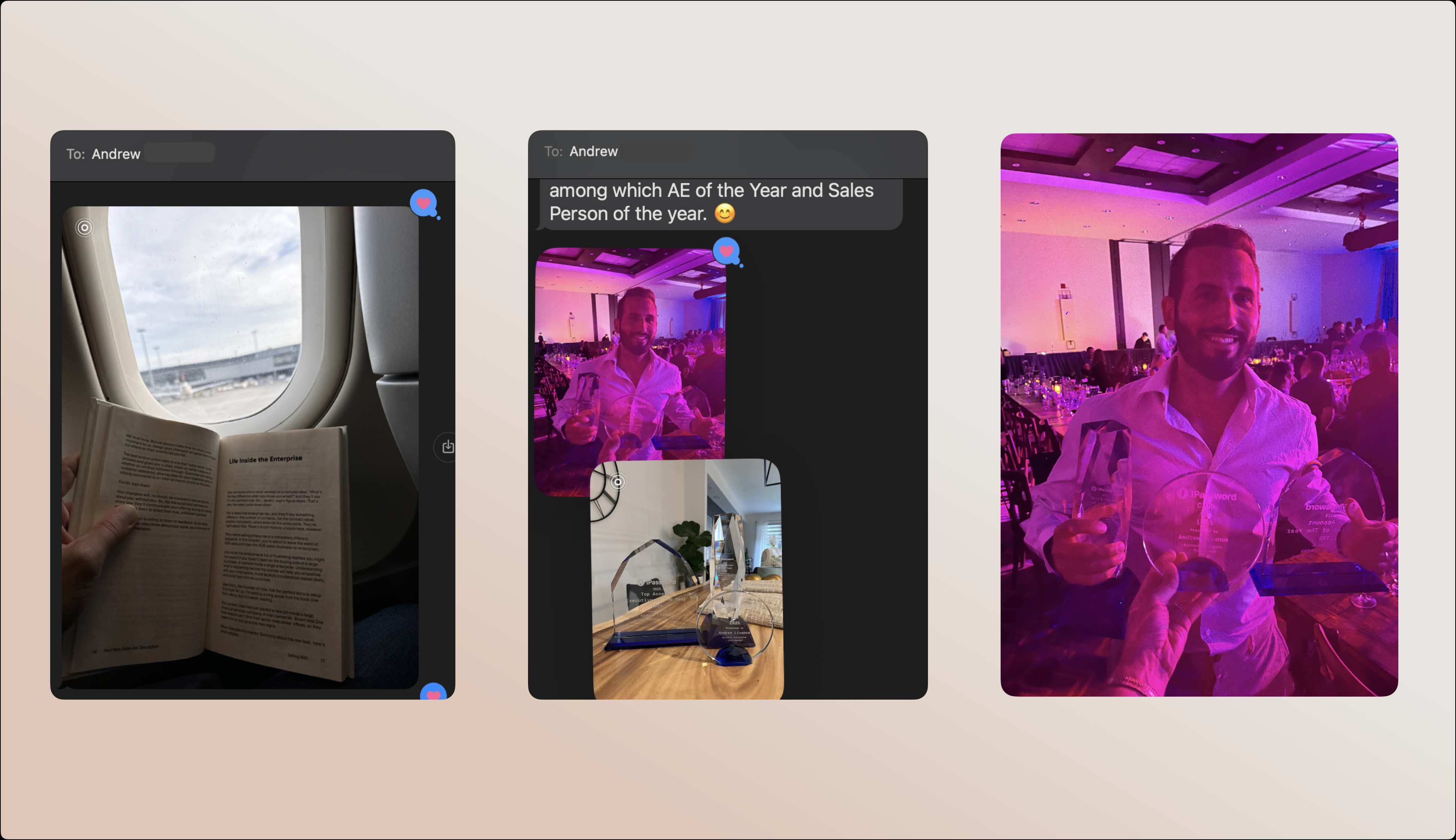
Capture baseline metrics.
As you send your rabbits running, grab two types of baseline metrics:
- Leading metrics
- Output metrics
Leading metrics correlate with revenue impact over time, and a recommended set of inputs to track are:
- % of deals with a written business case
- of buying team edits / comments
- Early-stage (e.g. S2 → S3) conversion / cycle time
- % of early-stage deals with exec engagement
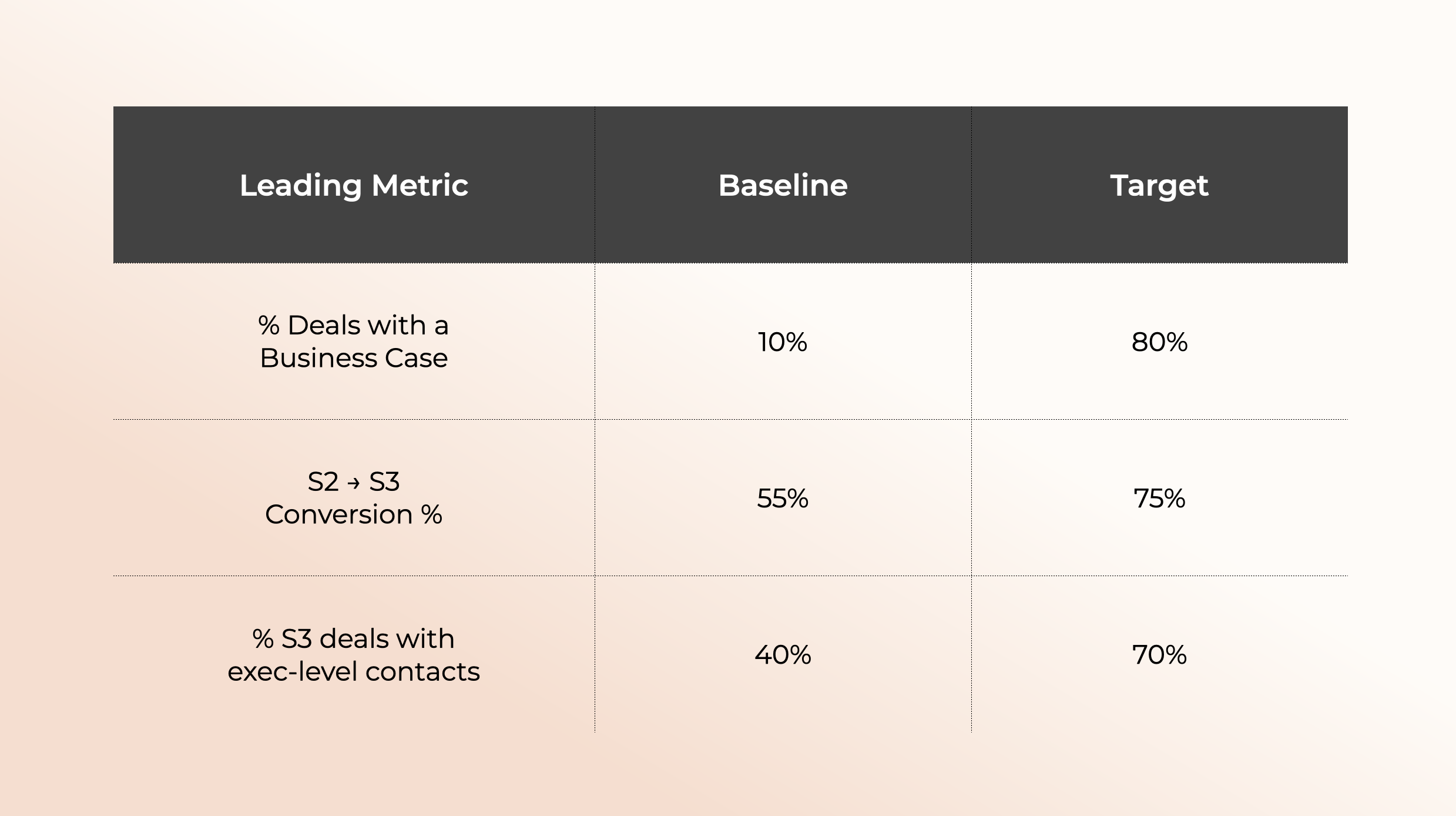
Chances are, this data won’t be super easy to access.
So spend time with Revops on, (1) what you’d like to capture going forward, (2) what “infrastructure” type changes are needed to start filling gaps in your dataset.
From here, you’re looking to match that up with baseline sales velocity, which should already be on hand:
- ACV
- Cycle Time
- Win Rate
- Revenue / Rep
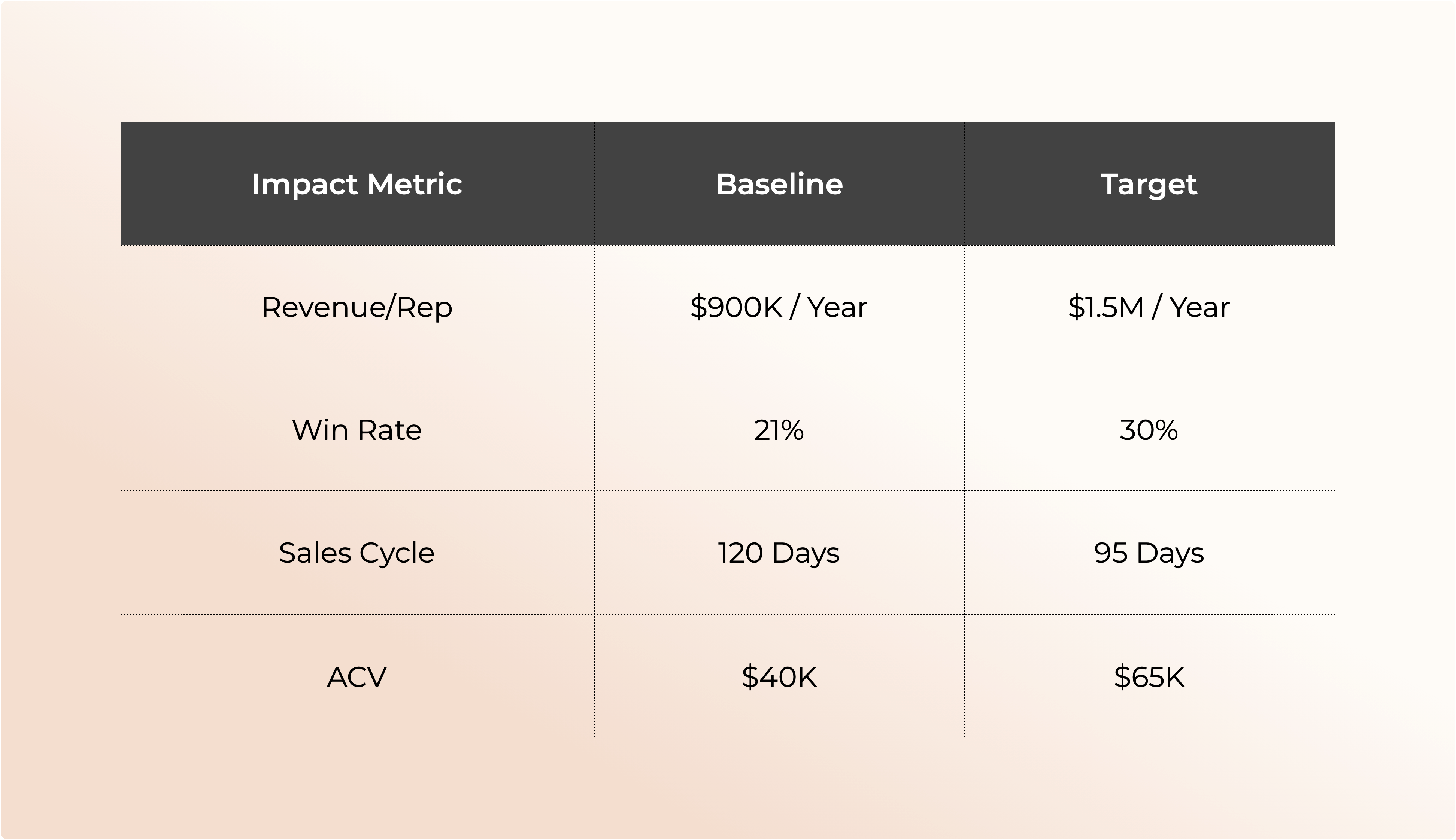
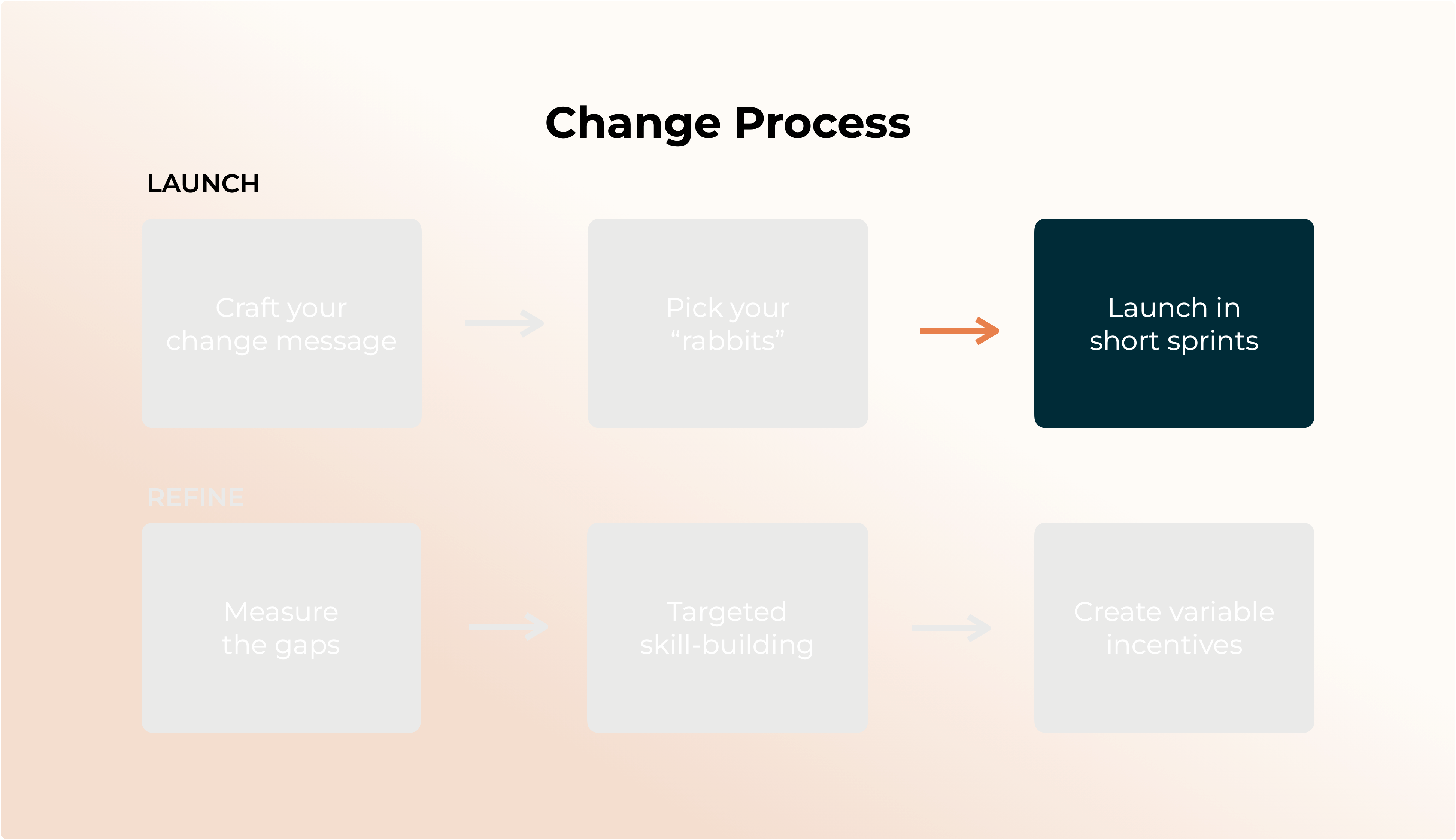
Right as your rabbits take off through the rest of the steps below, you’ll want to do an official “launch.”
This is where you’ll deliver the change message you built in the first step. This launch is a big deal, too —
You’ll want to pull together all your cross-functional teams, and setup how this positions you to be a better partner across the business. While introducing a “named” project, that’s here to stay.
Some example project names from other teams:
- Stage Presence(How we “show up” for customers at each stage.)
- NextGen.(Leaving the old way for the next “generation” process.)
- The < Company Name > Way.(This is the “way” we do things now. A popular one.)
This might seem like a small thing, but having shared language for the effort makes all the difference. It’s also just more practical to have some internal shorthand to capture all this:

Each part above should be rolled out in a short “sprint.” Where you create and implementing the change, then moving to the next.
During each sprint:
- Use the materials below.
- Implement inside your process.
- Communicate the change to all.
- Start to measure progress, and find gaps.
(Sprint 1) Map exit criteria to buying behaviors.
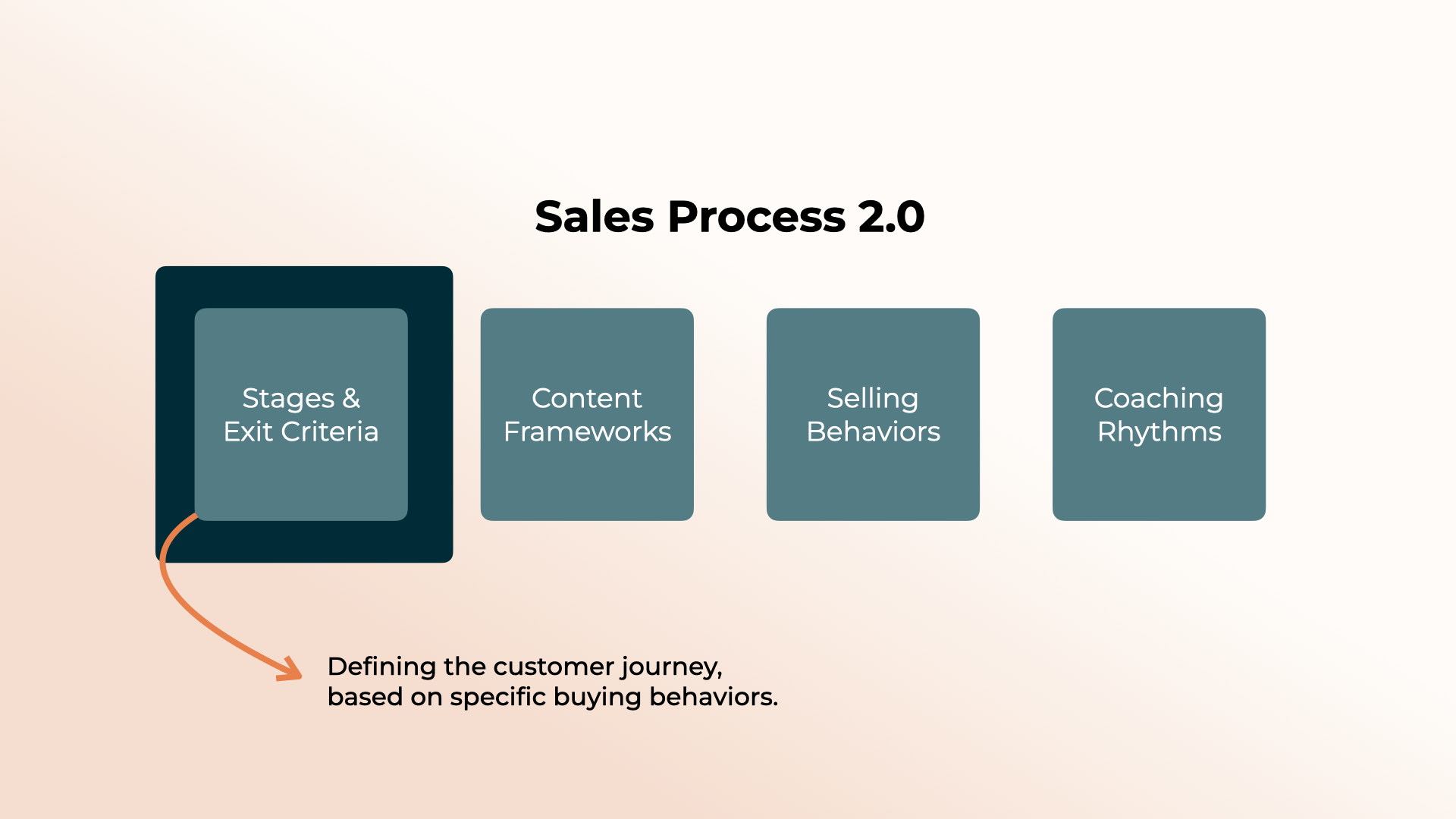
Good sellers enable good buying behavior.
So as part of your rollout:
- Outline a series of buying behaviors that lead to a decision.
- Develop exit criteria you can test for, based on those behaviors, so deal progression is directly tied to evidence.
For example, it really doesn’t matter that a seller “sent a proposal.”
What actually matters is, does the executive care? Did they read it? Are they sponsoring a “project” it can impact?
Here’s a spreadsheet version you can take and adapt, with a full breakdown on each stage here.
For most organizations, this will simplify a lot of overly complex criteria. By focusing on just one sentence per stage.
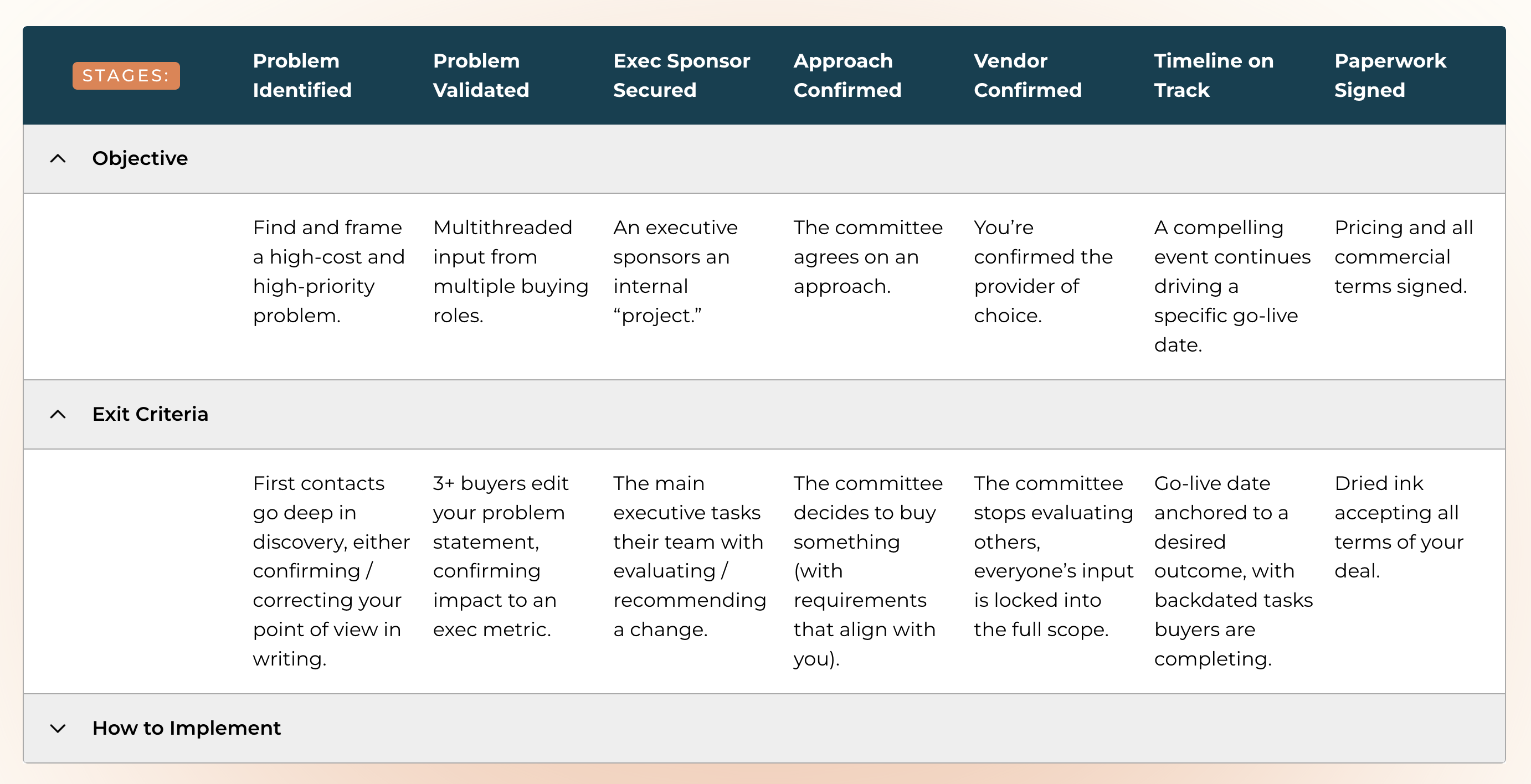
(Sprint 2) Map content frameworks to each stage.
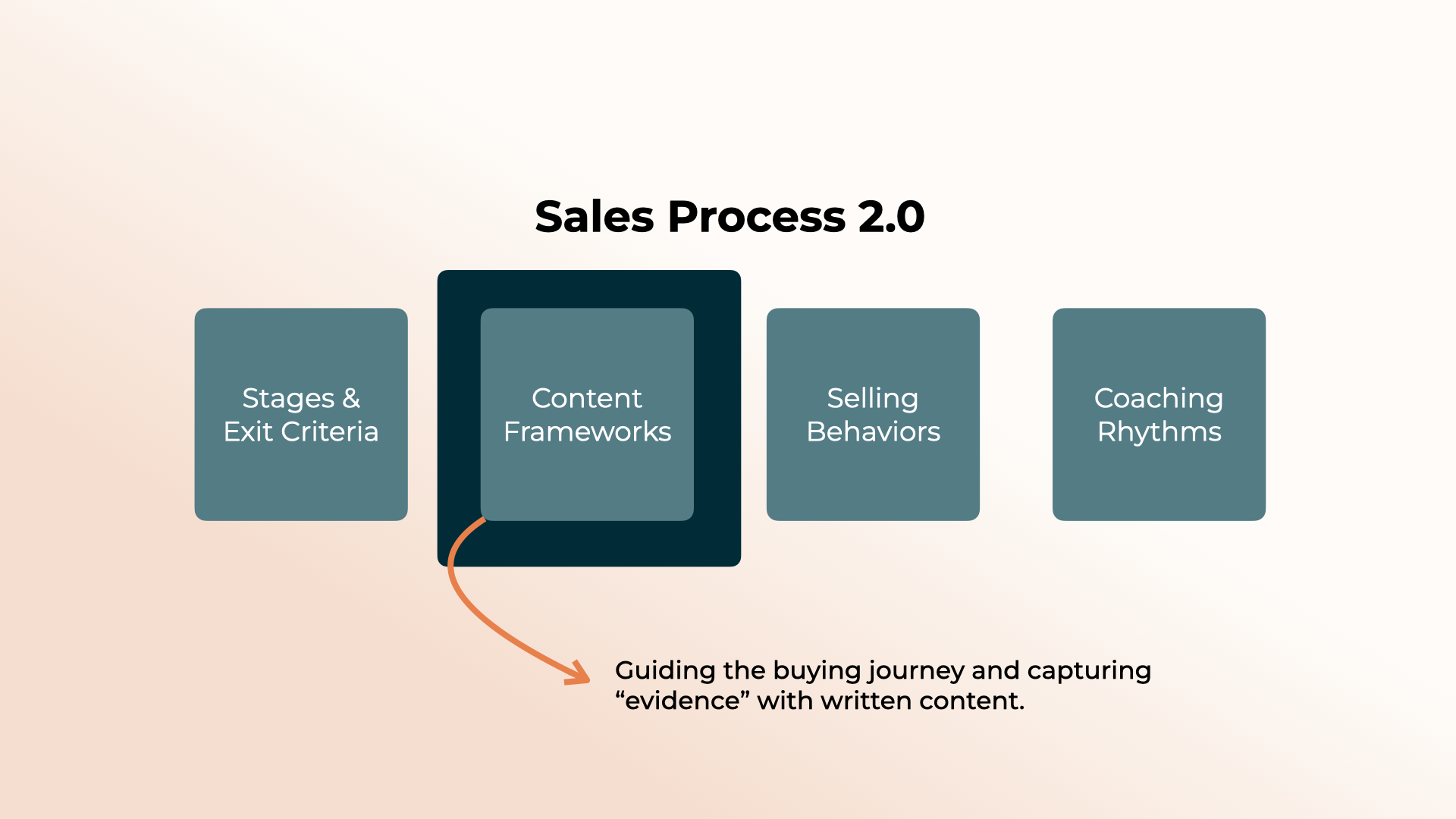
One of the big ideas behind 2.0 is that your content:
- Can be “in the room,” even when reps can’t be.
- Creates the “evidence” of what’s real in a deal.
- Keeps the entire GTM team on the same page. Literally.
While the business case is the process, and it’s the core framework behind 2.0, it also develops a reps’ discovery and thinking to produce:
- Demo briefs for Sales Engineers designing demos.
- Internal briefs for Sales Leadership forecasting deals.
- Value summaries for Value Engineers.
- Handoff docs for CS & Services.
→ Download all frameworks mapped by sales stage here.
For example, here’s how one customer showed this inside a sprint:
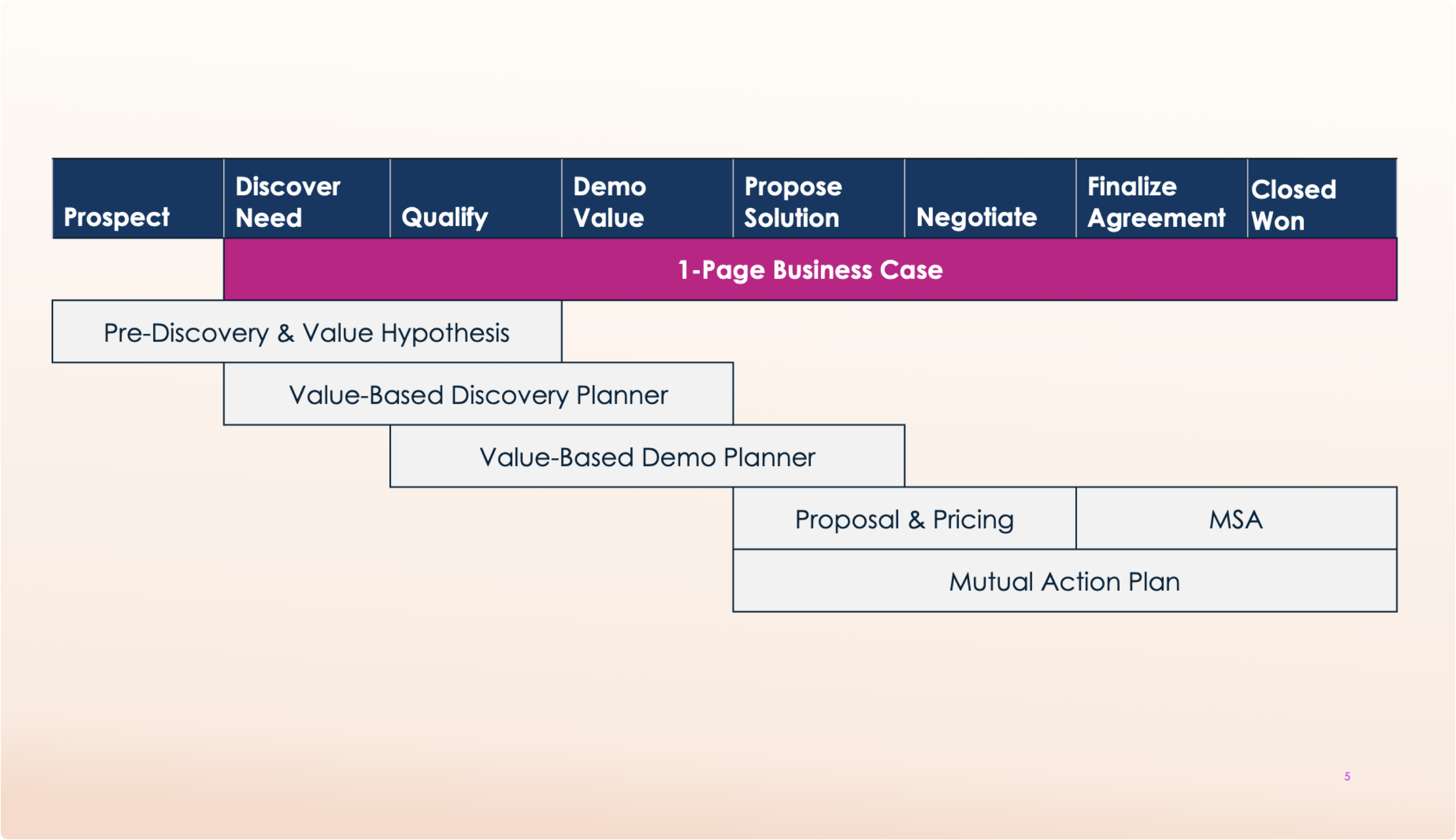
This is also what we’ll setup inside Fluint with you:
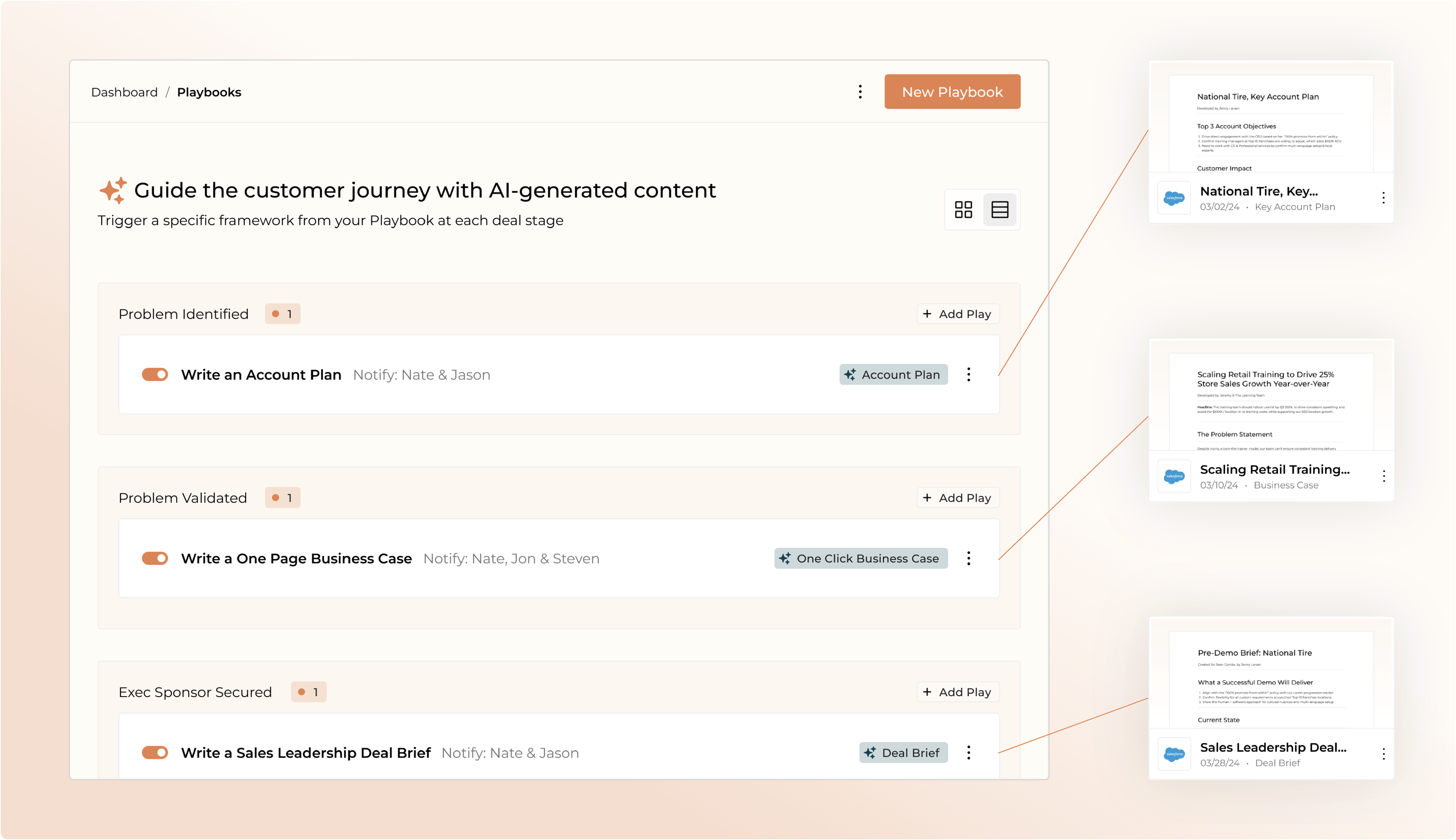
(Sprint 3) Set the standard, and score selling behavior.
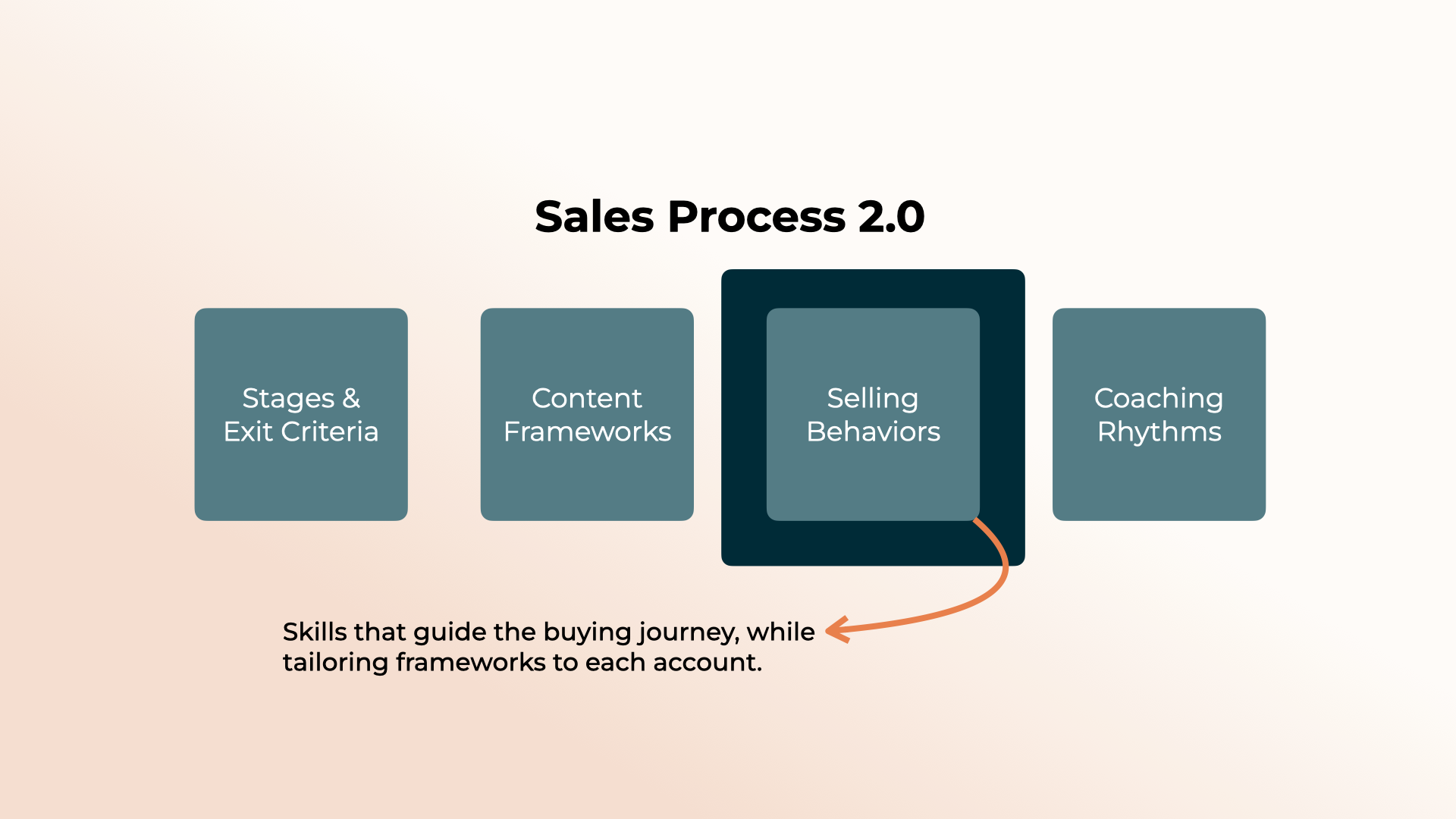
Scorecards are nothing new.
They benchmark performance and guide selling behavior, by breaking down what top reps do consistently.
But now, in 2.0, we’re scoring content — not just calls.
Which is how we pressure test an entire deal’s health with just a single number, based on what is (not) documented.
This also means you can operationalize this using a single field in your CRM, the business case “score” that’s added to a forecast.
As a deal progresses through each stage, that field gets updated, and should grow stronger over time.
Feel free to adjust the specifics, but it’ll look something like this:
- Stage 1 = 20%
- Stage 2 = 40%
- Stage 3 = 60%
- Stage 4 = 70%
- Stage 5 = 80%+
And, here’s the scorecard to tailor for your team:
.png)
(Sprint 4) Adjust and coach to new team rhythms.

This is where the entire change effort can start to crumble, like a toddler eating a Nature Valley granola bar in a freshly cleaned car.
(Parents, you know what I’m talking about.)
Frontline leaders will start to adjust their 1:1’s and team rhythms to integrate written content frameworks.
For example:
- Key accounts inside 1:1 convo’s start with a Key Account Brief. No written brief? Use the 1:1 to build it together.
- Planning sessions with SE’s start with a written Pre-Demo Brief.
- QBR’s? Pull up the business case for each target account, and better yet, share ahead as a pre-read.
For a full example and breakdown on how to shift your deal reviews into a “2.0” rhythms, check out this crash course:
PS, if you’re not yet selling with Fluint, let’s talk — we’ll guide you through making this shift, together:

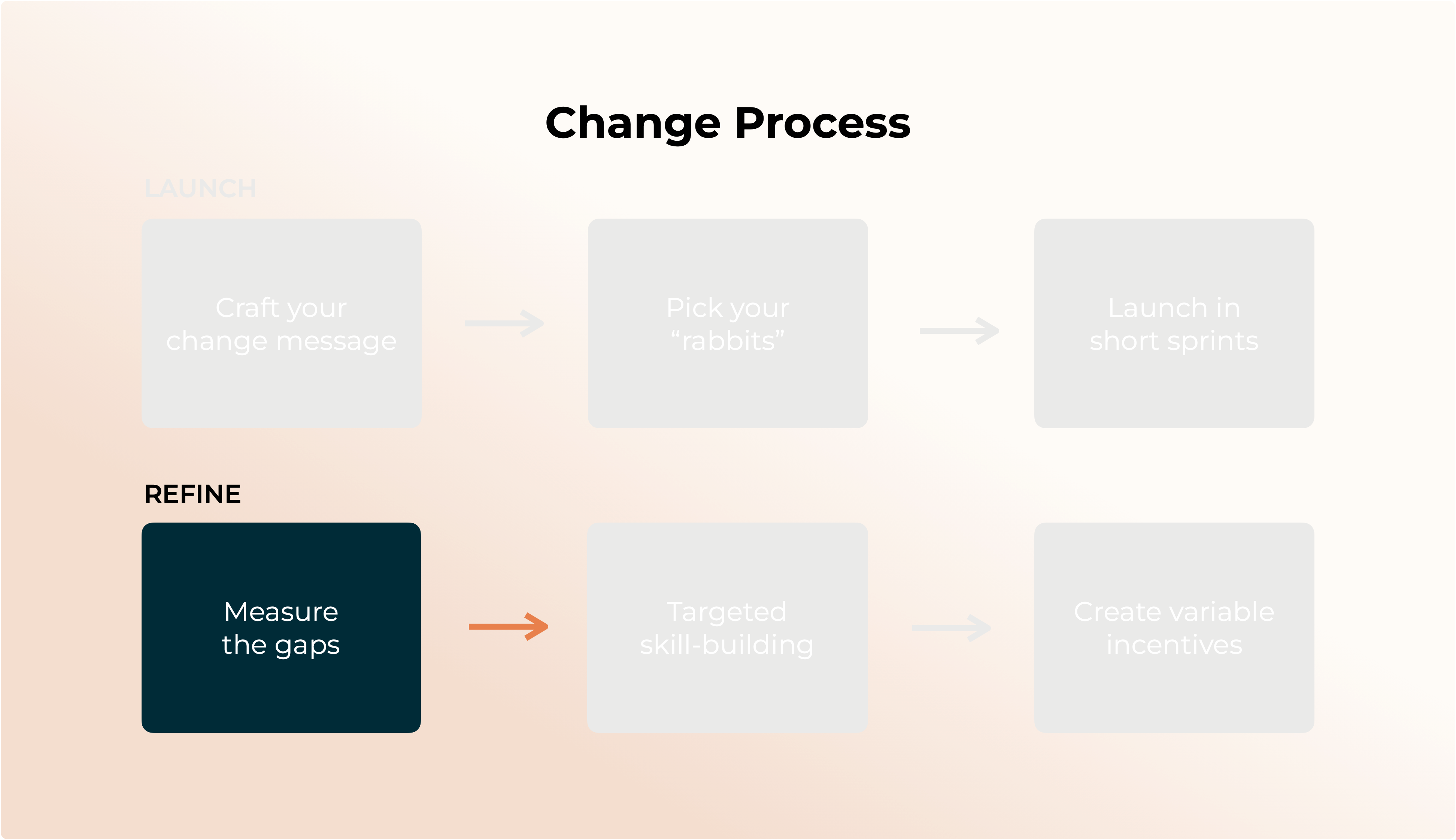
This is where we start to speed up.
With every change sprint above, you should have a narrowly-defined target or “hurdle” to clear, before moving into the next sprint:
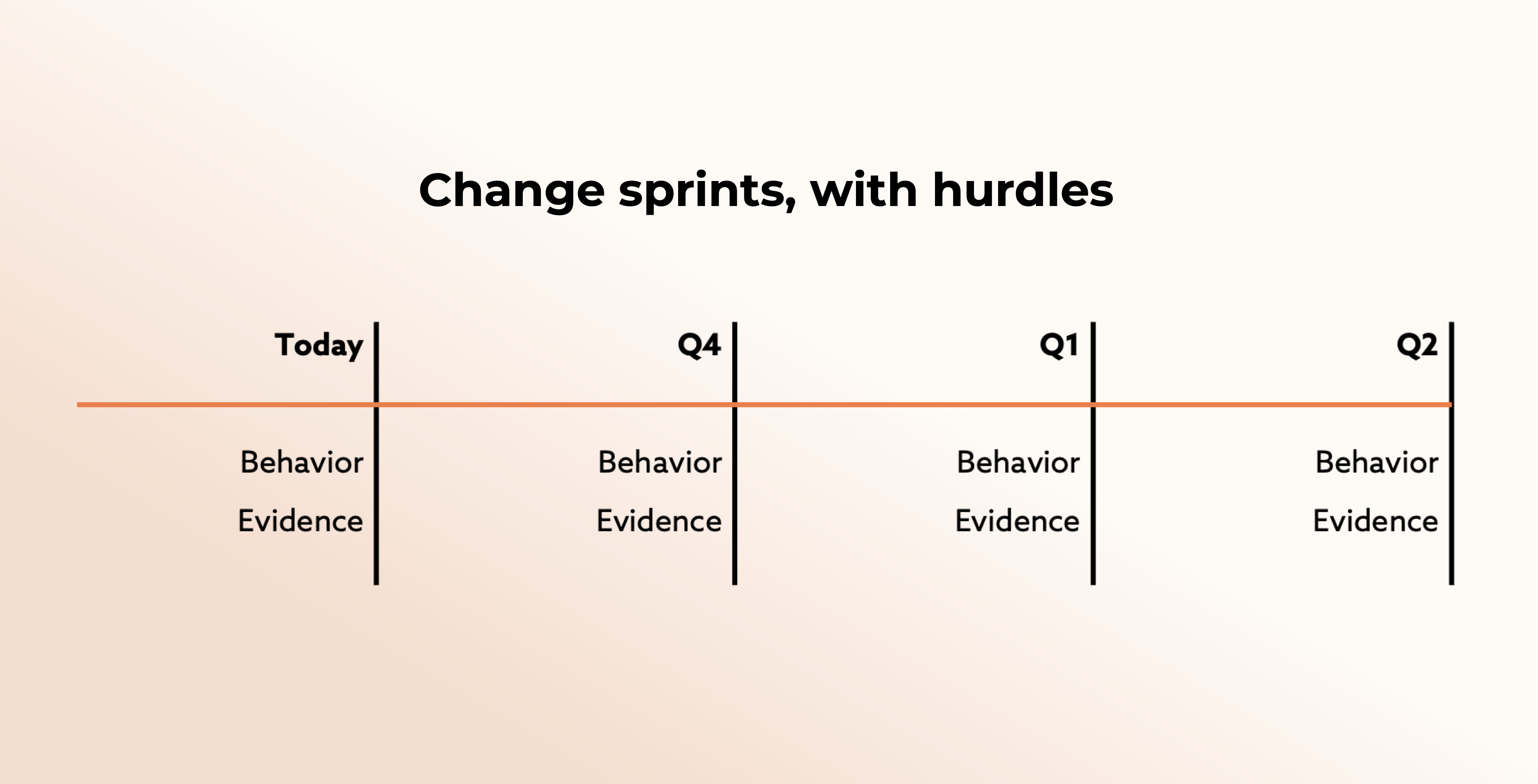
For example, let’s say:
1/ Your sprint:
→ How you run deal reviews.
Because today, they’re wandering, inefficient, and low-impact.
2/ The behavior you’re targeting:
→ Sellers building written deal briefs ahead of the meeting.
To help clarify top deal threats, and bring more resources to the AE. Like adding CS time during the pre-sales process, to meet with late-stage prospects anxious about the go-live process. Because data shows CSM’s meeting with prospects = 98% higher win rate (Gong).
3/ The “hurdles” you’d put in place:
What % of deal reviews actually had a written deal brief? Are we doing this consistently? And, for those with a brief, what % of those deals slipped?
If the gap’s still too wide, you can’t move to the next sprint yet. There’s more work to be done. Likely, by following the next two steps to make sure things stick.
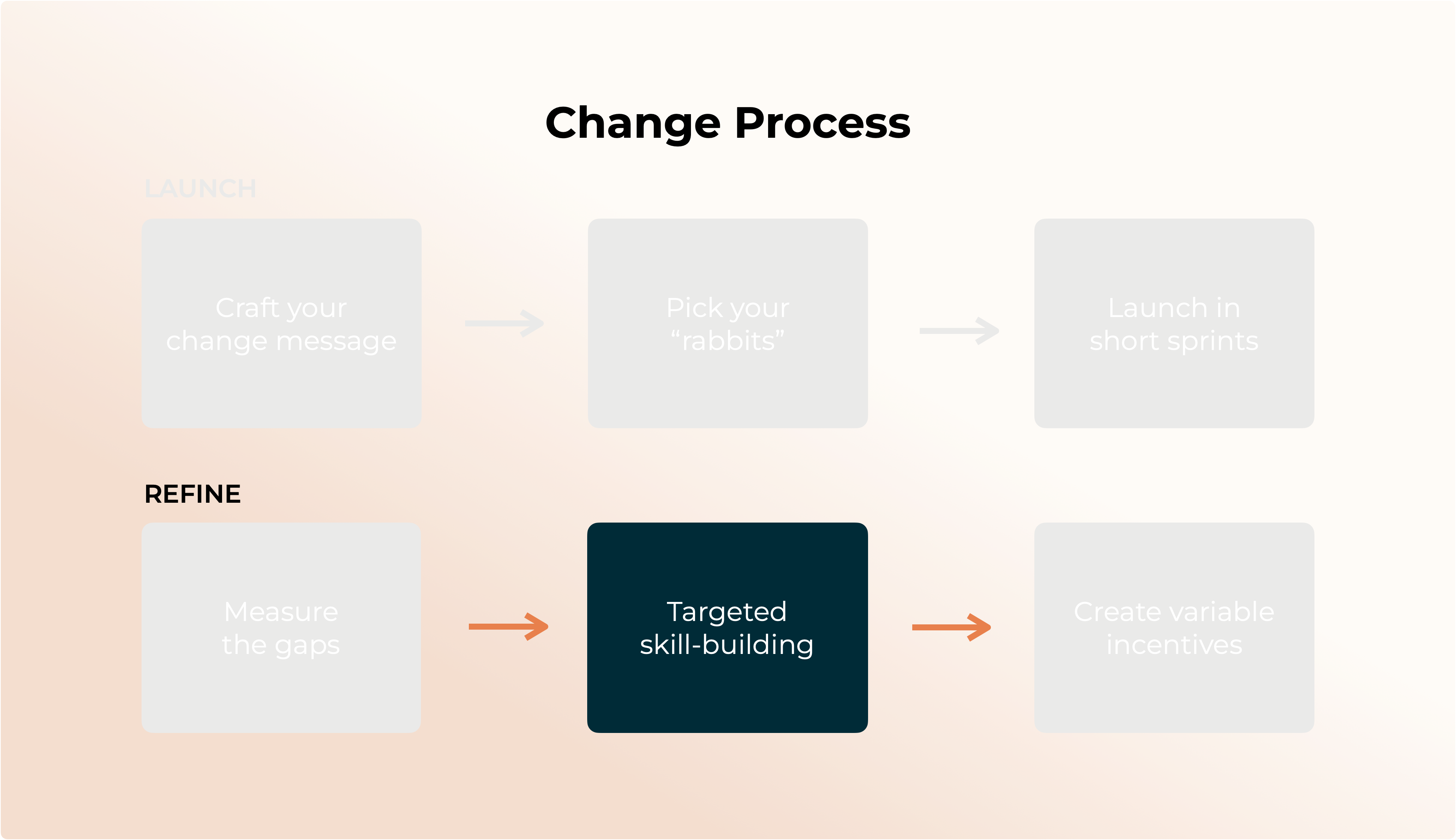
This is where the concept of “rabbits” comes back into play, in a big way.
As you find gaps that need to be closed across the broader GTM team, you’ll rollout a set of targeted exercises, to build the skills and adopt the software that enables consistent execution.
While you setup the exercise, your rabbits will co-lead it.
This is key:
People learn best from others like them. So, when your rabbits’ teaching is colored in with the right experience and wisdom from leadership, they’ll add examples and “texture” that makes it easier for others to pick up.
This is also where the idea of scorecards comes back into play.
To continue our example, let’s say you find a pattern:
Late-stage deals slip when you have a business case < 4.
As you break down that top-line, score, you notice the team is consistently scoring low on the “problem statement” block:
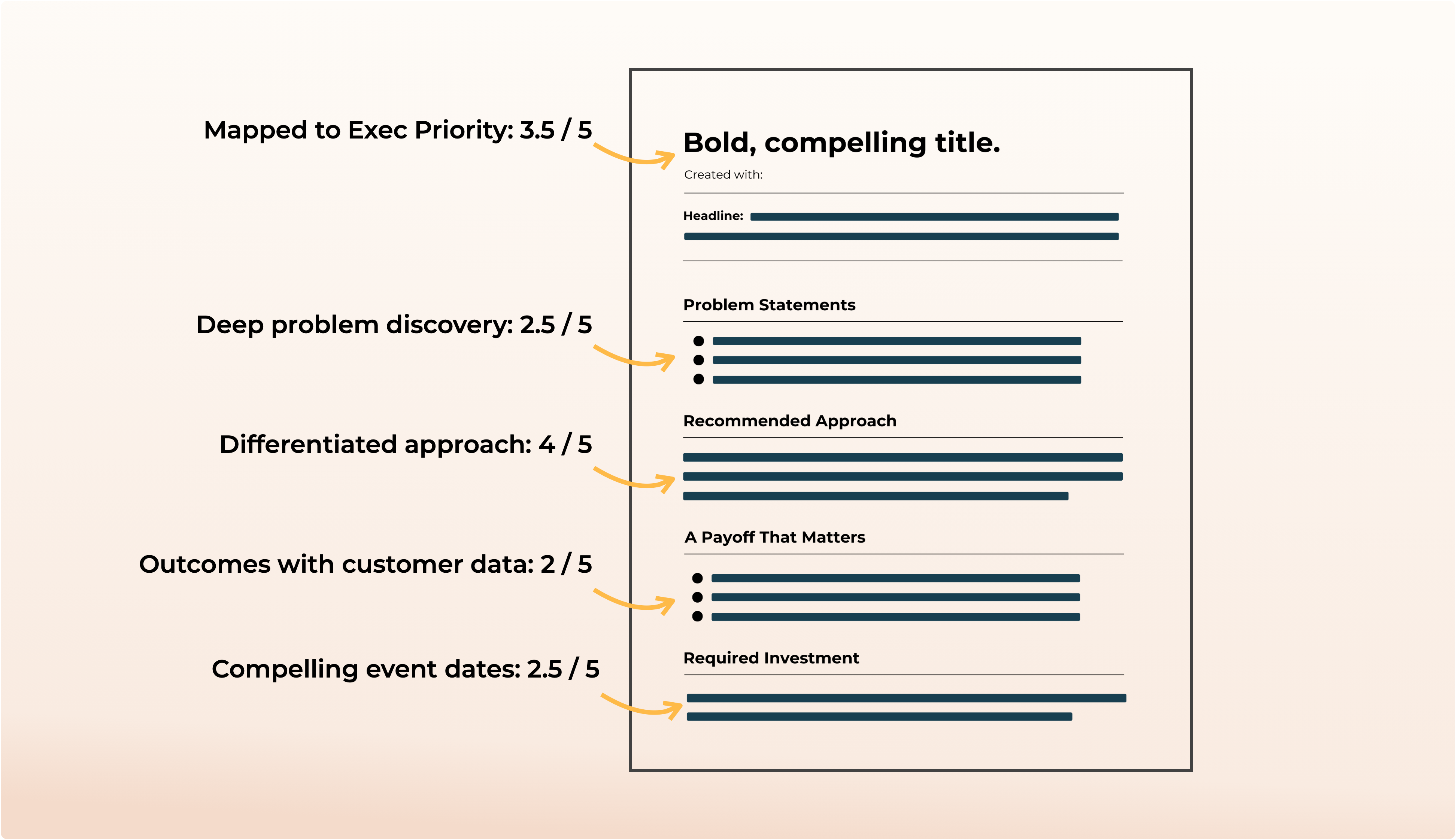
If the problem isn't worth prioritizing, deals stall. (The updated exit criteria above will help here too.)
In this case, the exercise you'd want to focus on is writing sharp problem statements:
- Set up an hour and bring the team together to practice. Or, repurpose an existing team meeting agenda.
- Have your rabbits share examples of how they're aligning buying teams by framing, layering, and measuring problem statements.
- Teach the principle, then do it together with active deals in pipeline.
To help, we've built out a shared whiteboard you copy, with a complete leader’s guide to co-leading these exercises:
Sales Process 2.0 Workshop Kit
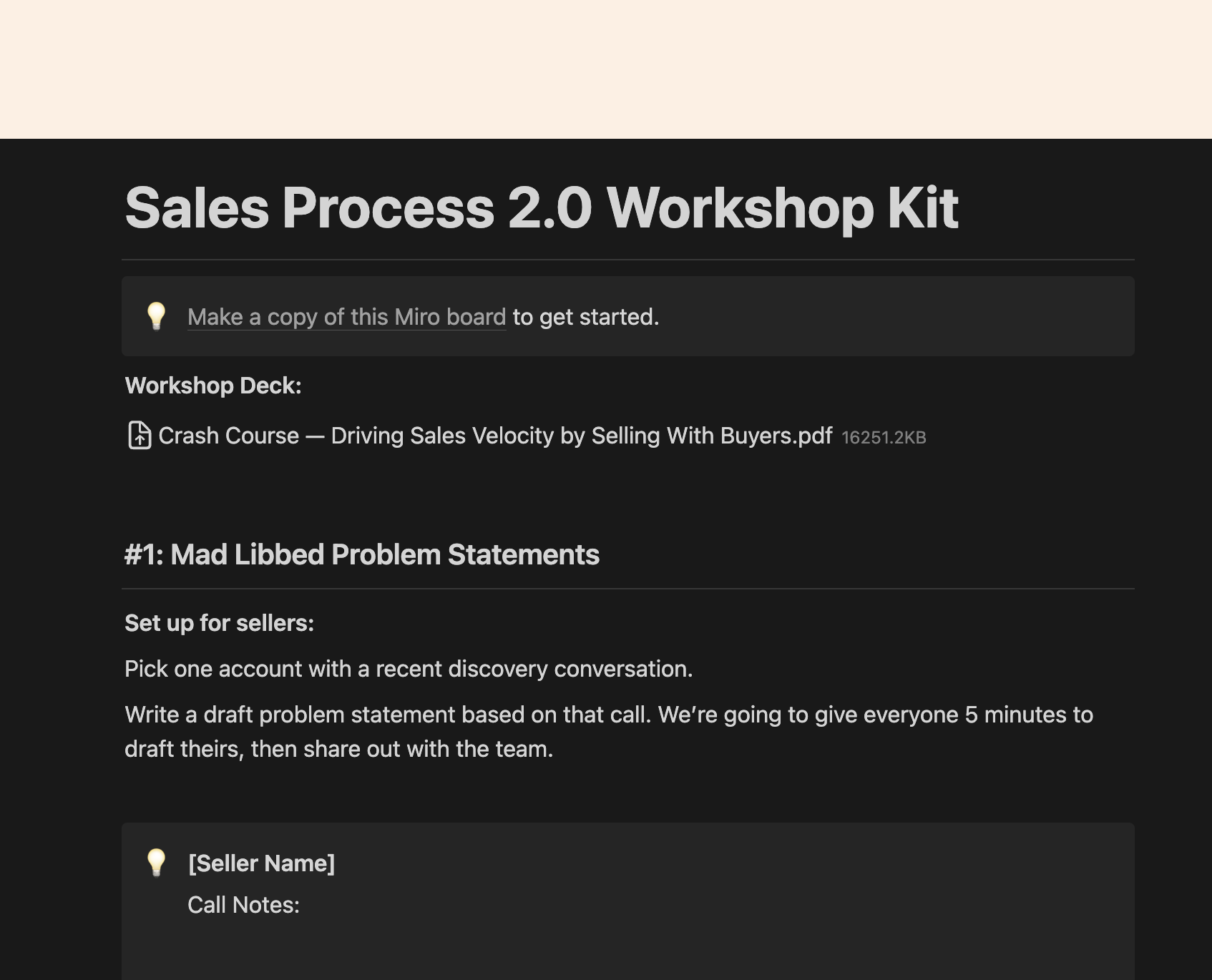
Plus the pre-built whiteboard in Miro:
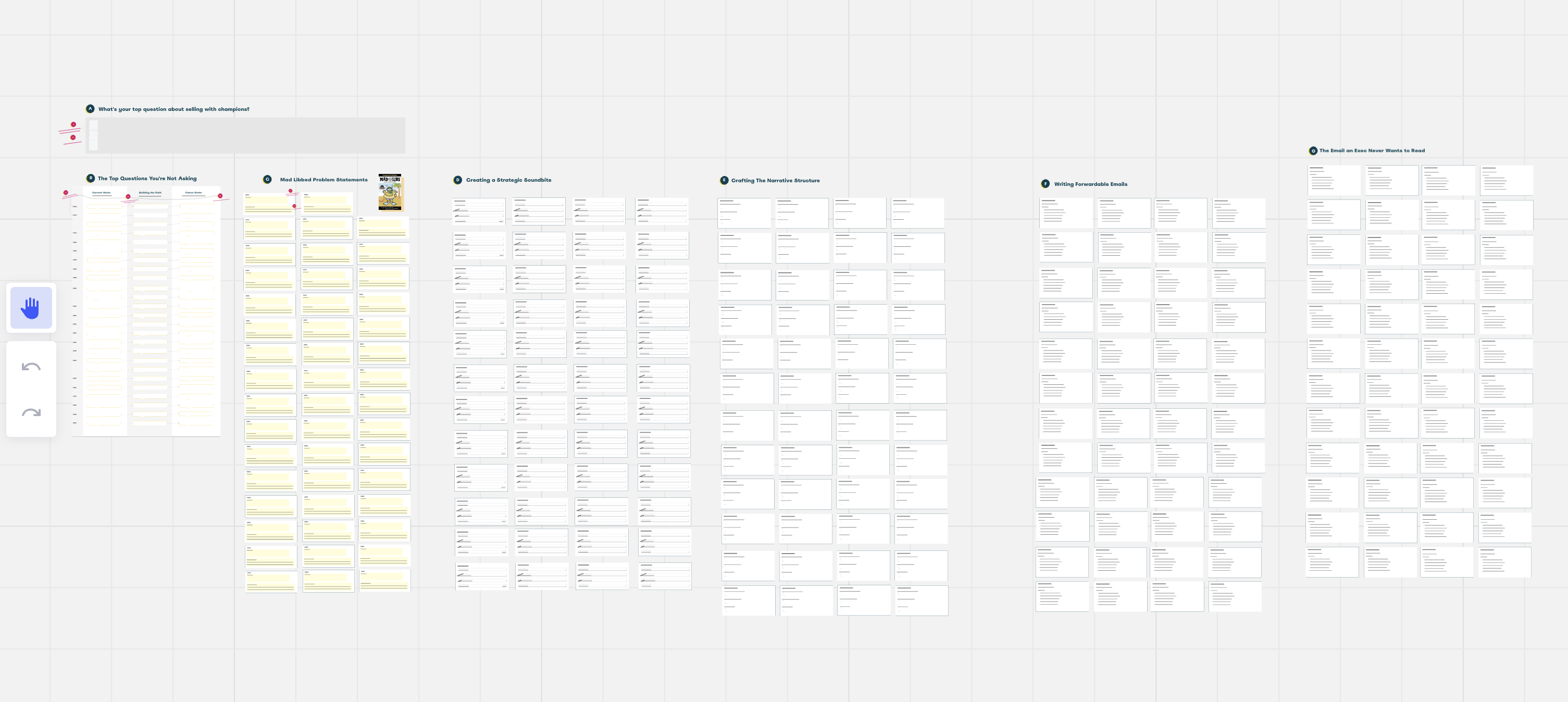
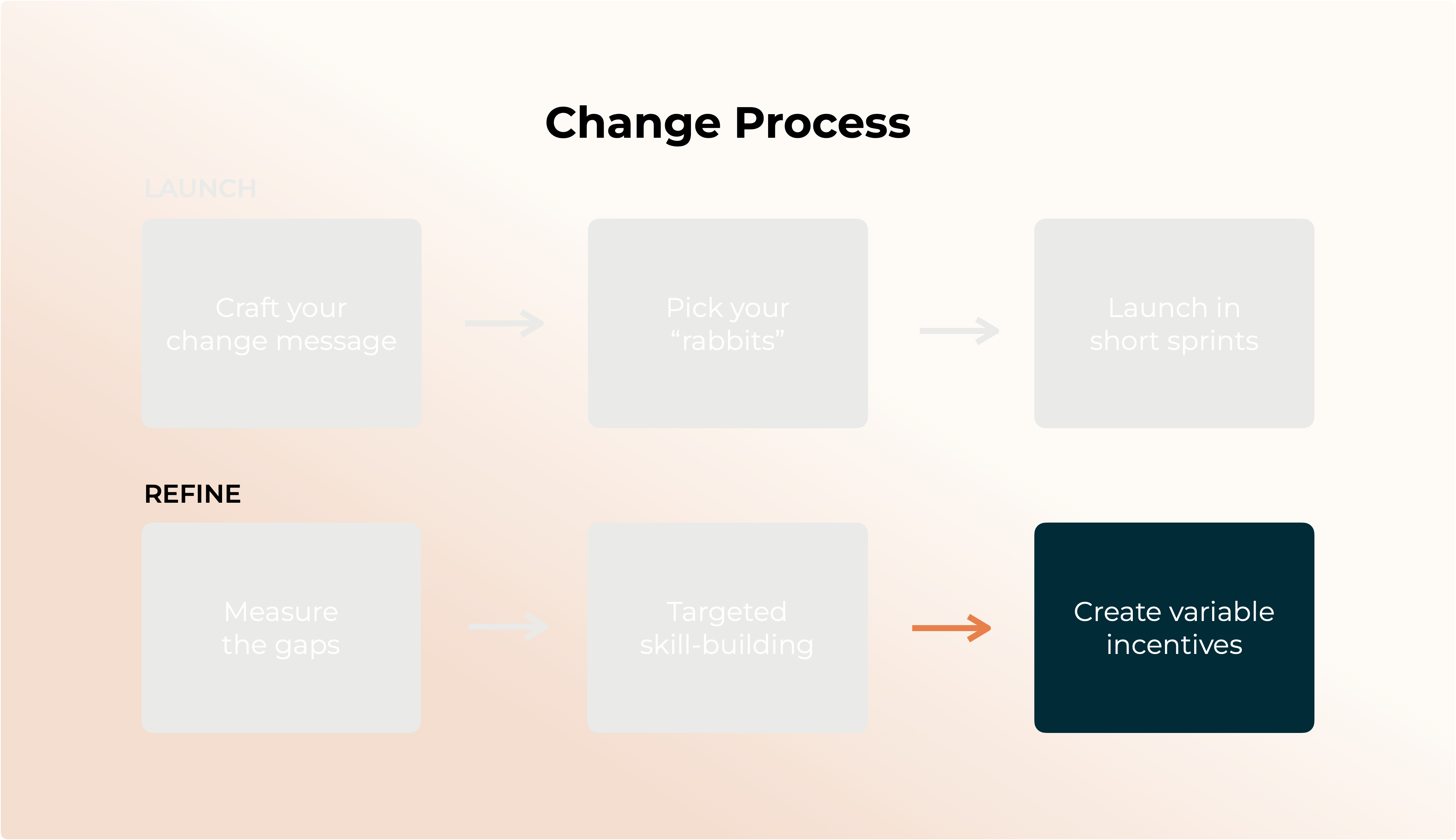
There’s this quote from Upton Sinclair:
“It is difficult to get a man to understand something, when his salary depends on his not understanding it.”
Meaning, if you’re directing a seller to do one thing, but their comp plan suggests they should do something else, guess what they’ll do?
They’ll follow their incentives.
So, while we said sellers aren’t “coin operated,” comp plans tell sellers what your organization actually values. So we do have to communicate in this way, too.
There are three, fundamental ways to adjust comp plans to drive change:
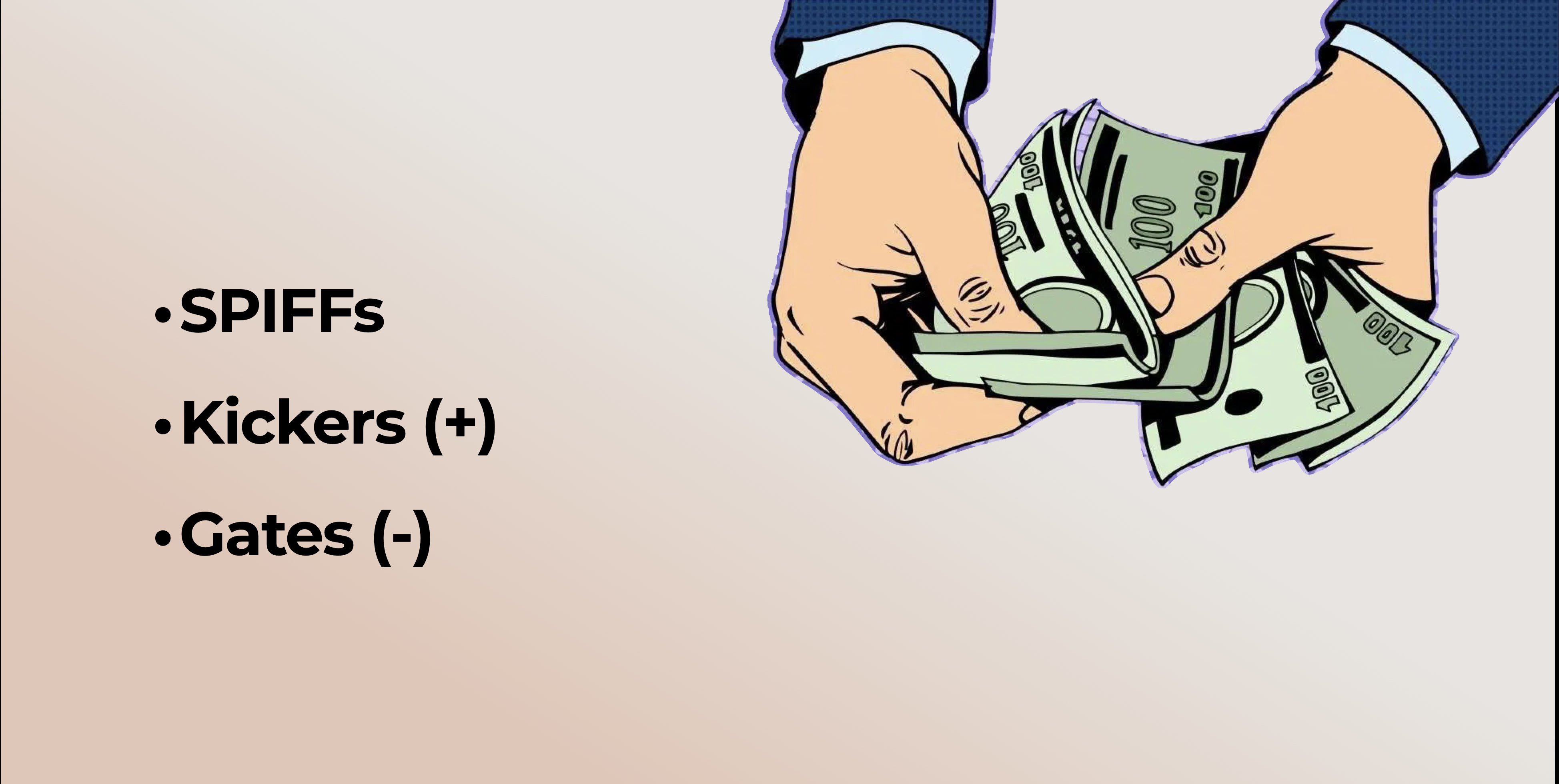
Each has its benefits:
1/ SPIFFs.
These work well for behavior vs. revenue-based payouts.
If you want reps building collaborative business cases that get exec buy-in, what do you do? When you get “proof” a champion forwards the business case they co-authored to an exec, that’s a spot bonus/payout.
2/ Kickers / Accelerators / Multipliers.
These are extra payouts based on running the entire, or a piece, of your updated process. Here’s one example:
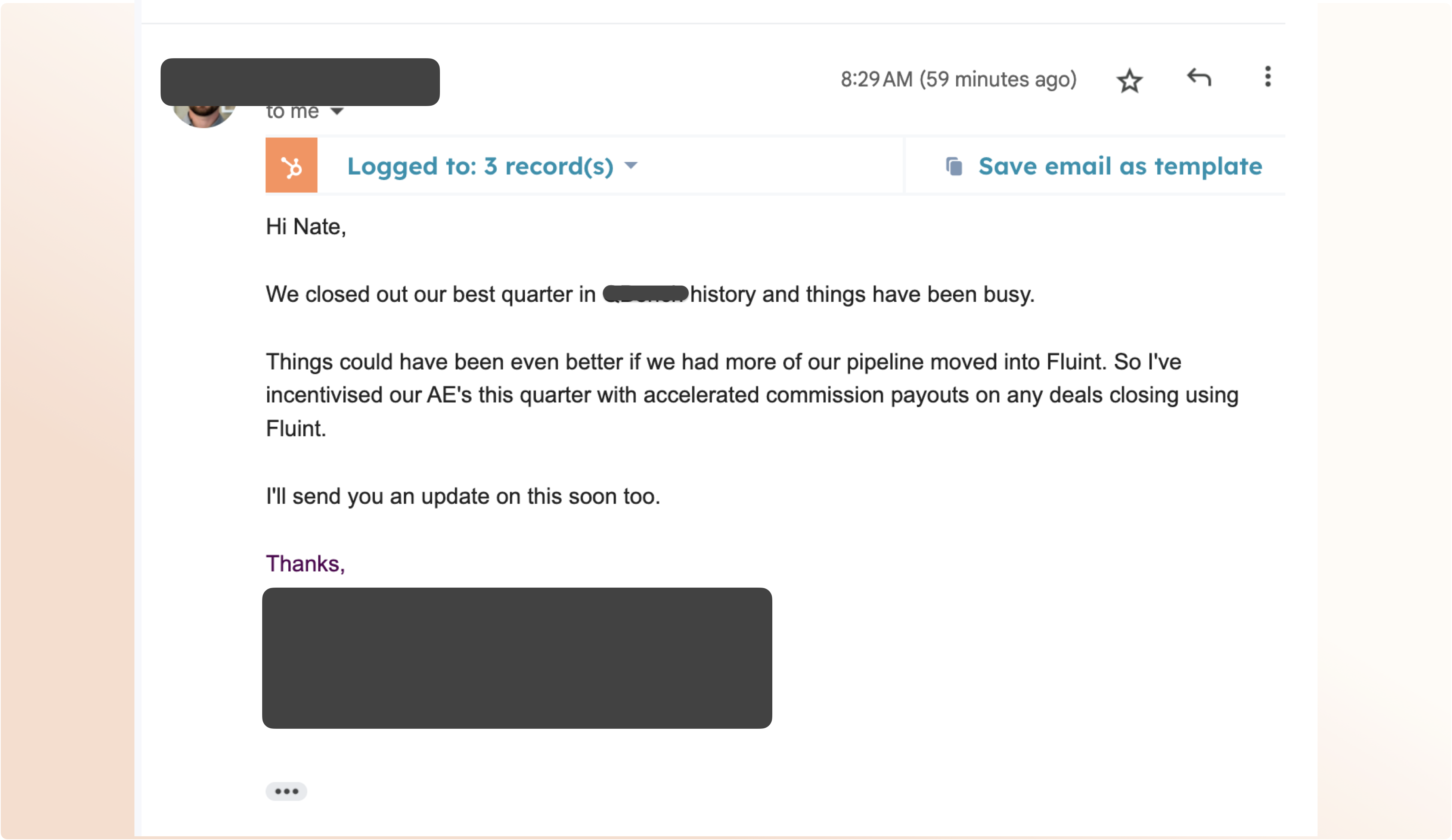
This works well at the start of a change effort, when you’re building win stories and need to create early momentum.
3/ Gates
This is the opposite of the above, and it’s a more “firm” way to enforce the standard. A deal, or payout, is held up until the standard’s met.
Here’s one example from another team:
Requiring a 1-Page Business Case to be submitted alongside a scope of work / pricing request to the Deal Desk.
That way, Finance has the context they need to make sure they’re setting up everyone well.
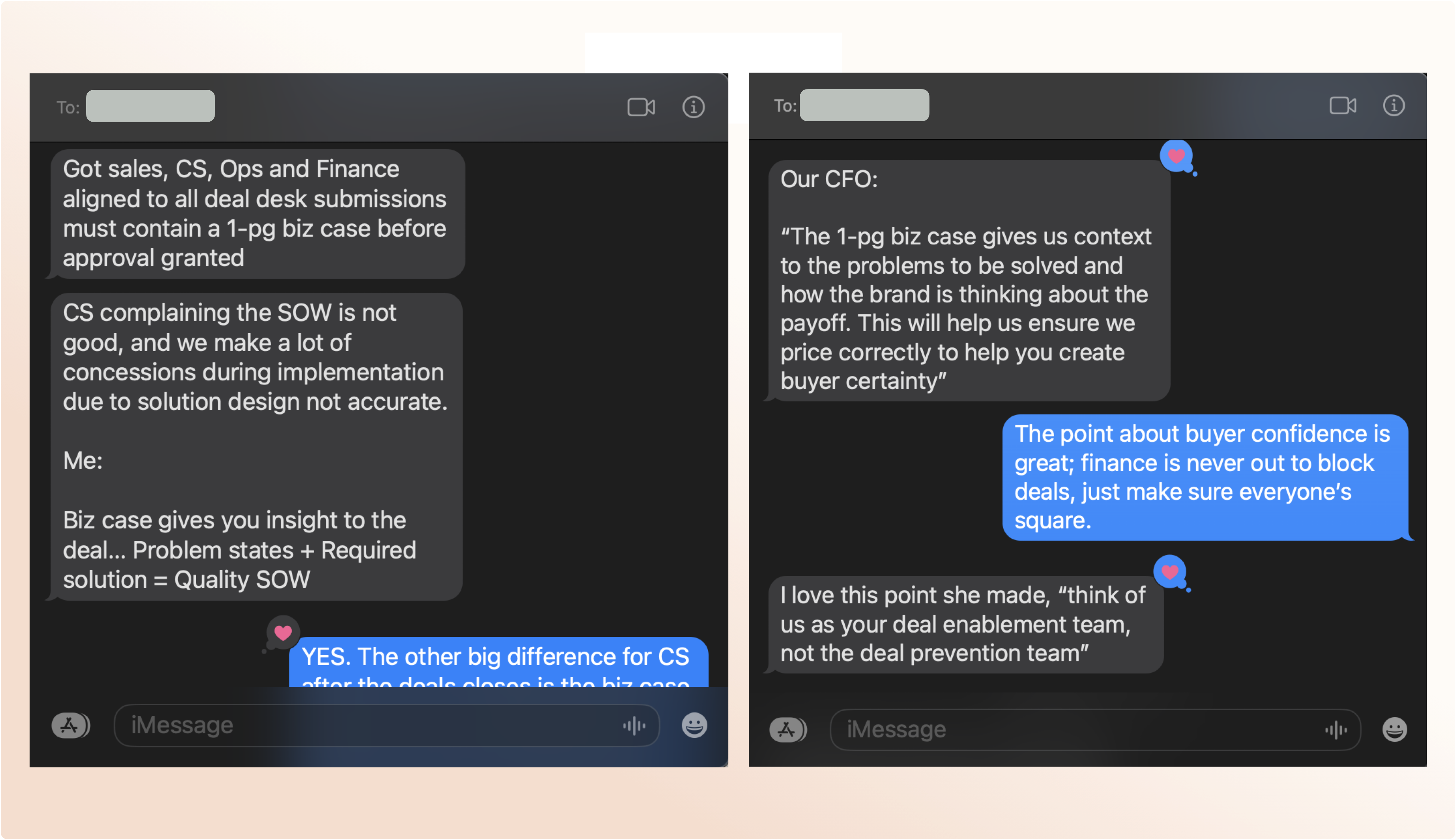
Here’s the thing about a “process.”
It doesn’t stop. It continues on, and gets sharper and better with time.
So here’s your final step: keep it going. Repeat these last steps over, and over — and share some stories with us as you go.
We’d love to hear how it’s going, where the friction is, and the small or big wins along the way.
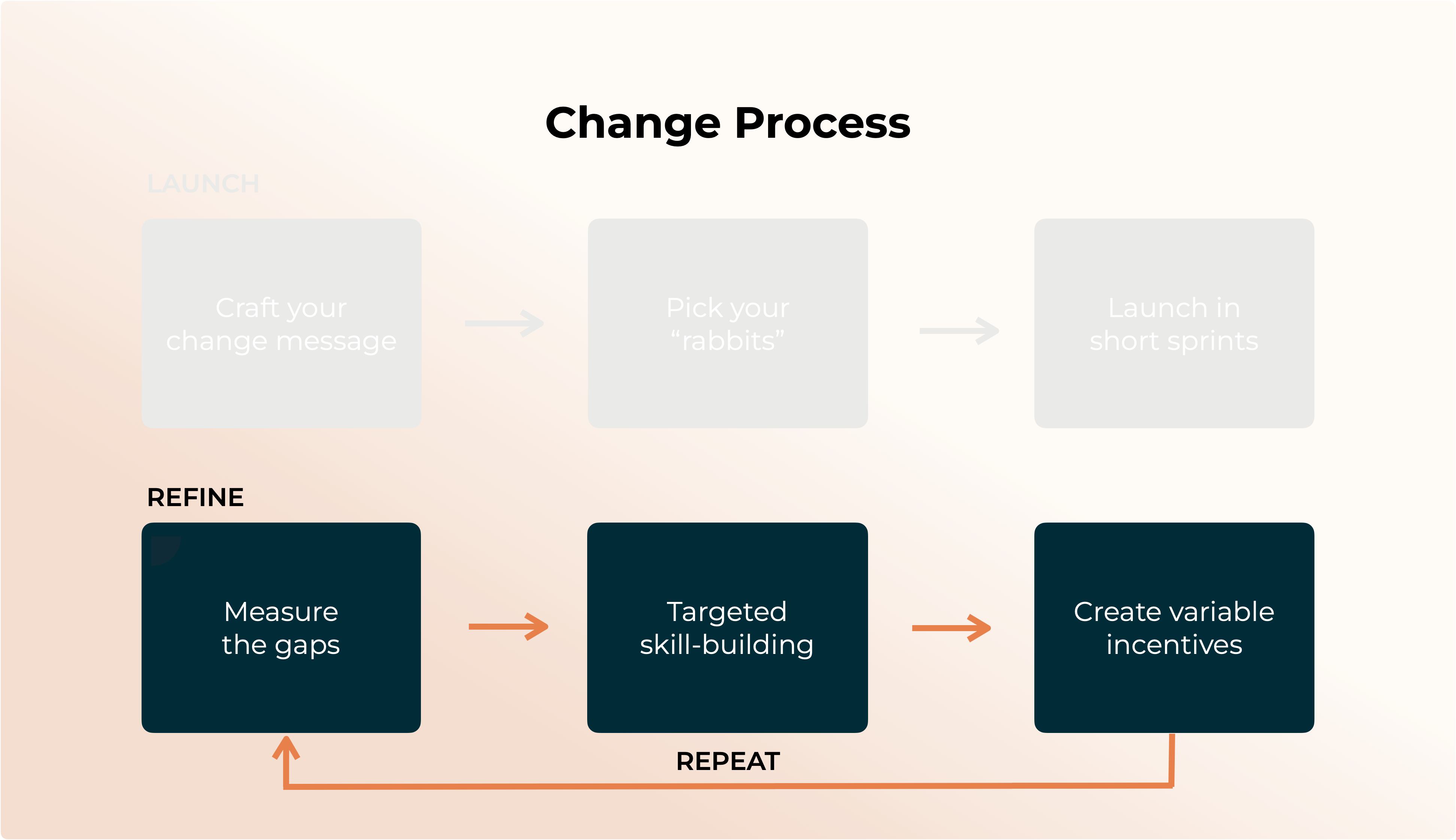
Fluint is a modern sales process designed to influence the buying process.
Guiding each customer’s journey from first call through upsell, using written content.
How does it work?
Our AI writes content, tied to specific deal stages. For example, “at Stage 2, draft a business case,” then “Stage 3, write a demo brief,” and “Stage 4, mutual action plan.”
For two reasons:
- For your customers:
Short summaries can be “in the room,” even if you can’t be. Scripting the message for executives (who won’t read your 30-slide decks).
- For your revenue team:
A way to get everyone from sales engineers to customer success on the same page with the customer. Literally.
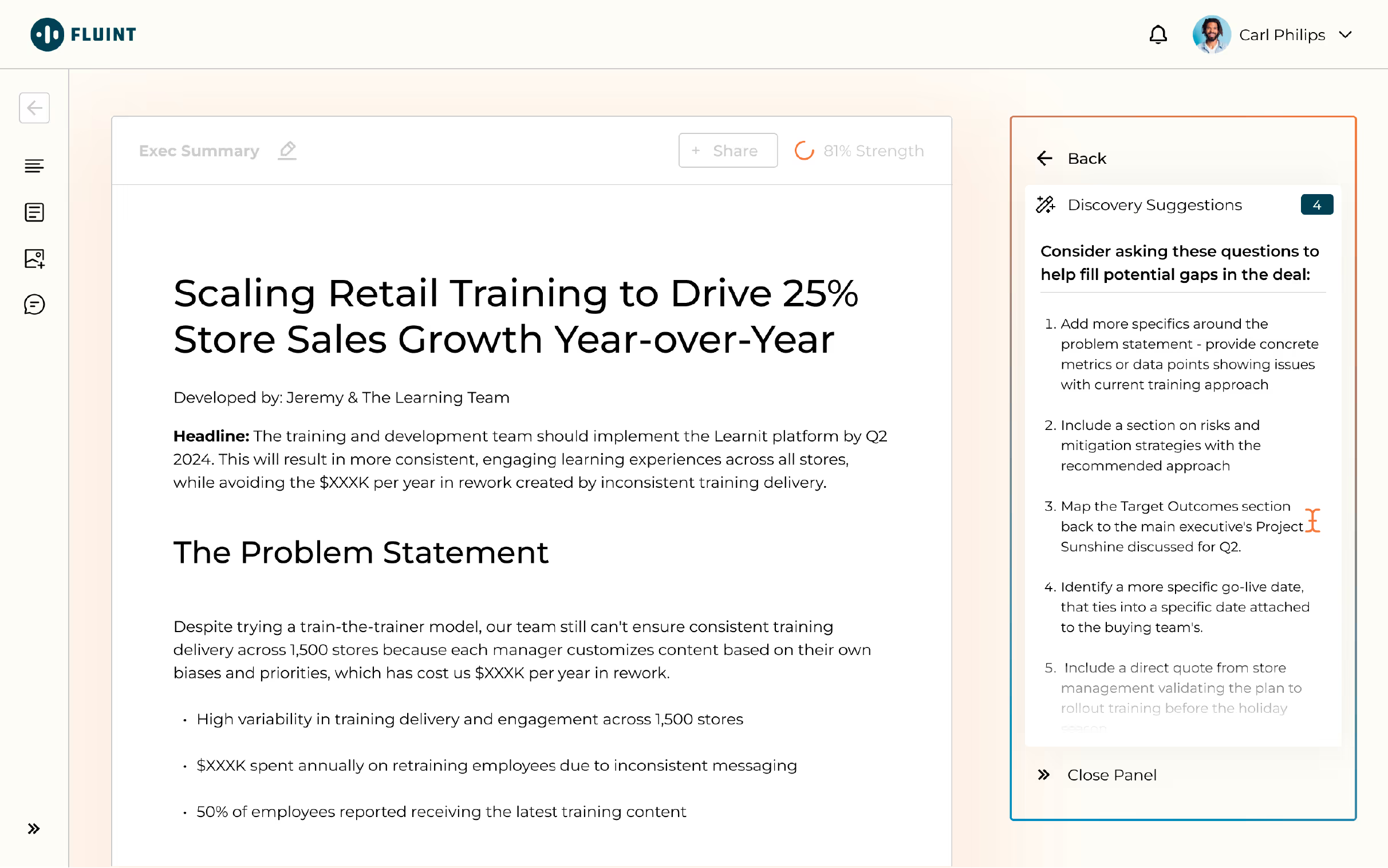
If you’re not yet a Fluint user, let’s talk:

We said change isn’t always linear, and often painful.
So it’s unlikely you’ll see 100% adoption of the new GTM motion after the full rollout. In fact, some sellers might self-select out of the team.
What’s most likely to happen is an initial bump in excitement, followed by a small percentage adopting alongside your rabbits.
Most people need time before buying in, and will follow a type of “Kubler-Ross Change Curve.”
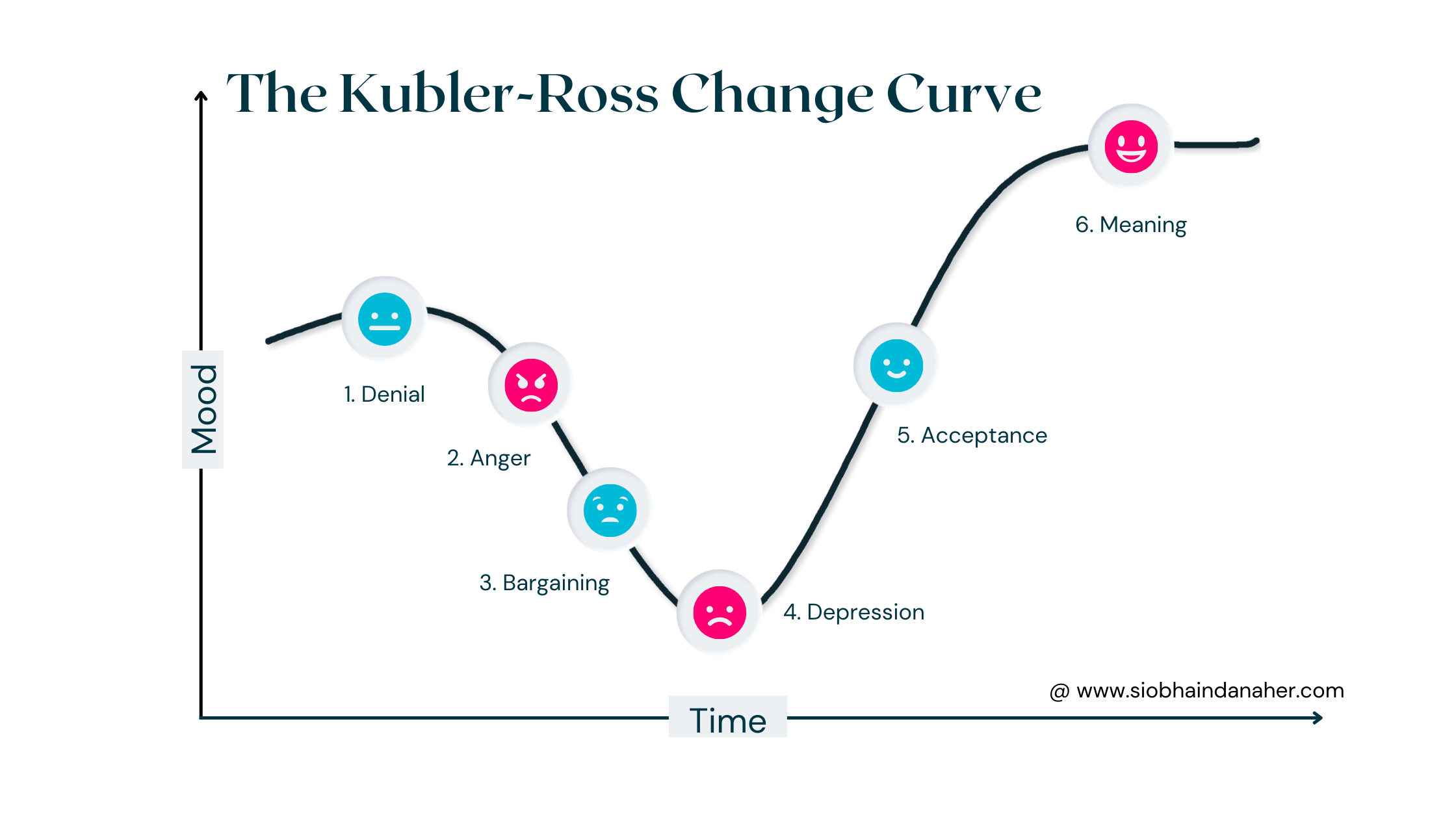
When this journey plays out, remember people are literally rewriting years and years of operating another way.
That’s hard, really hard. In a job that already brings enough chaos.
People’s frustrations are valid — especially when they haven’t experienced any fast success with the new GTM approach.
So, resist the urge to bow out early, or lower the standard. Instead, try to map where your sales leaders and sellers are on this curve.
It “never always get worse.”

Oh hey! If you made it this far... you might want to test drive Fluint
Fluint lets you apply everything in this playbook to the deals you’re working on, right now. Get an executive-ready content in seconds, built with your buyers words and our AI.
